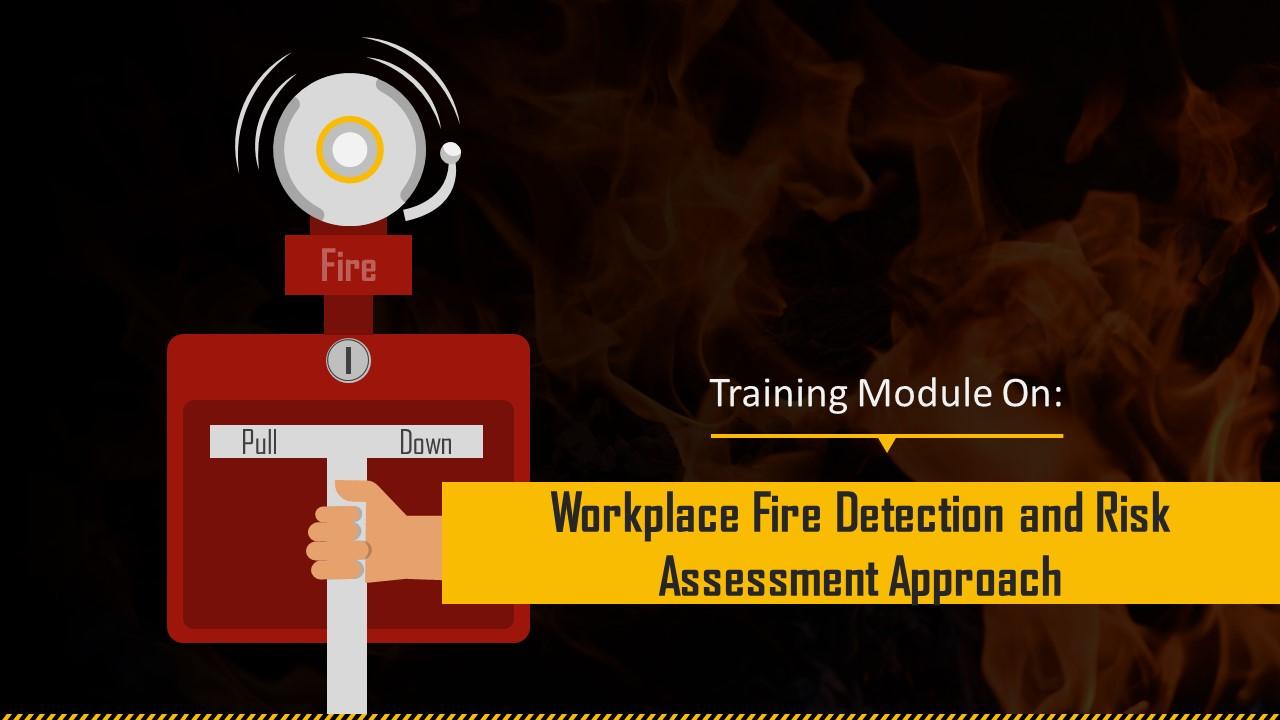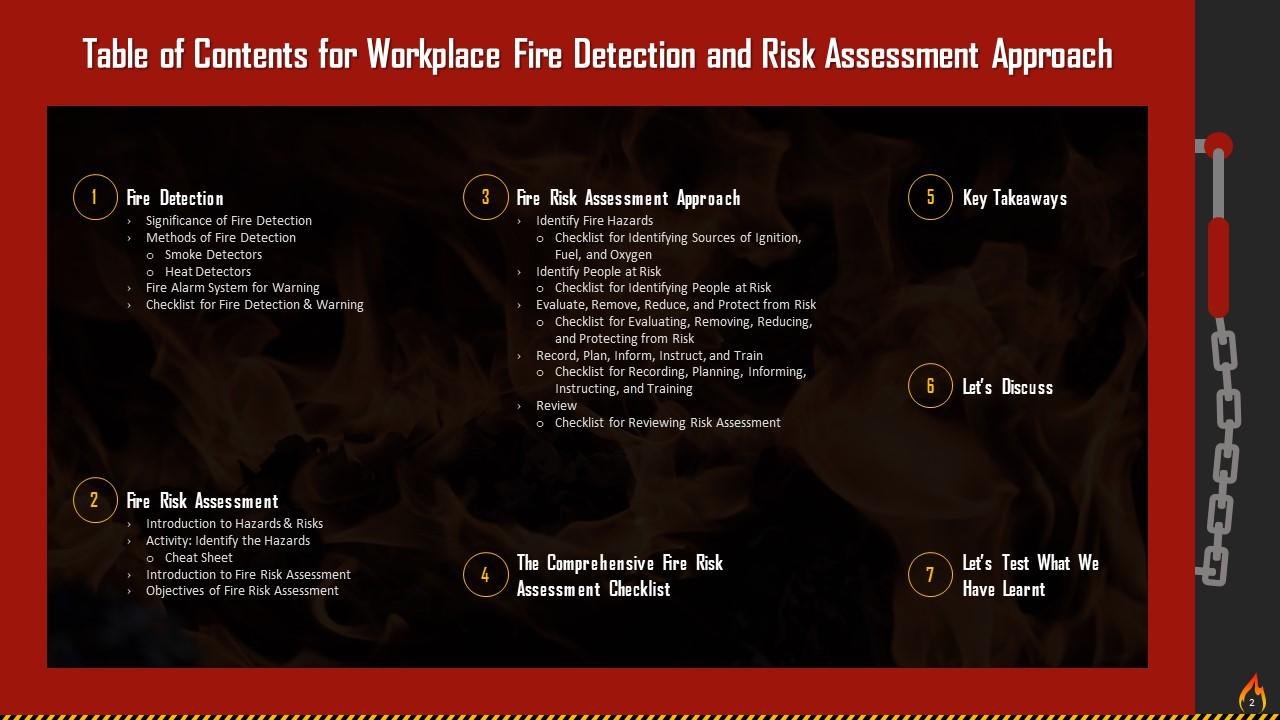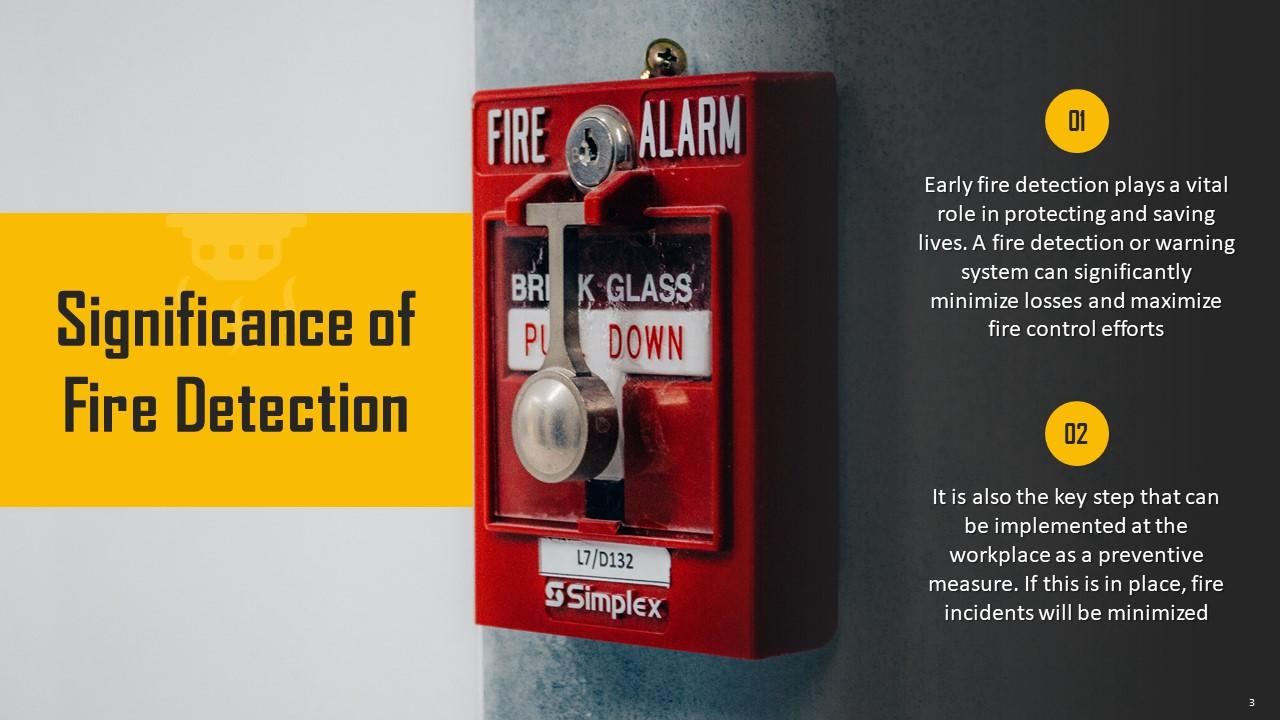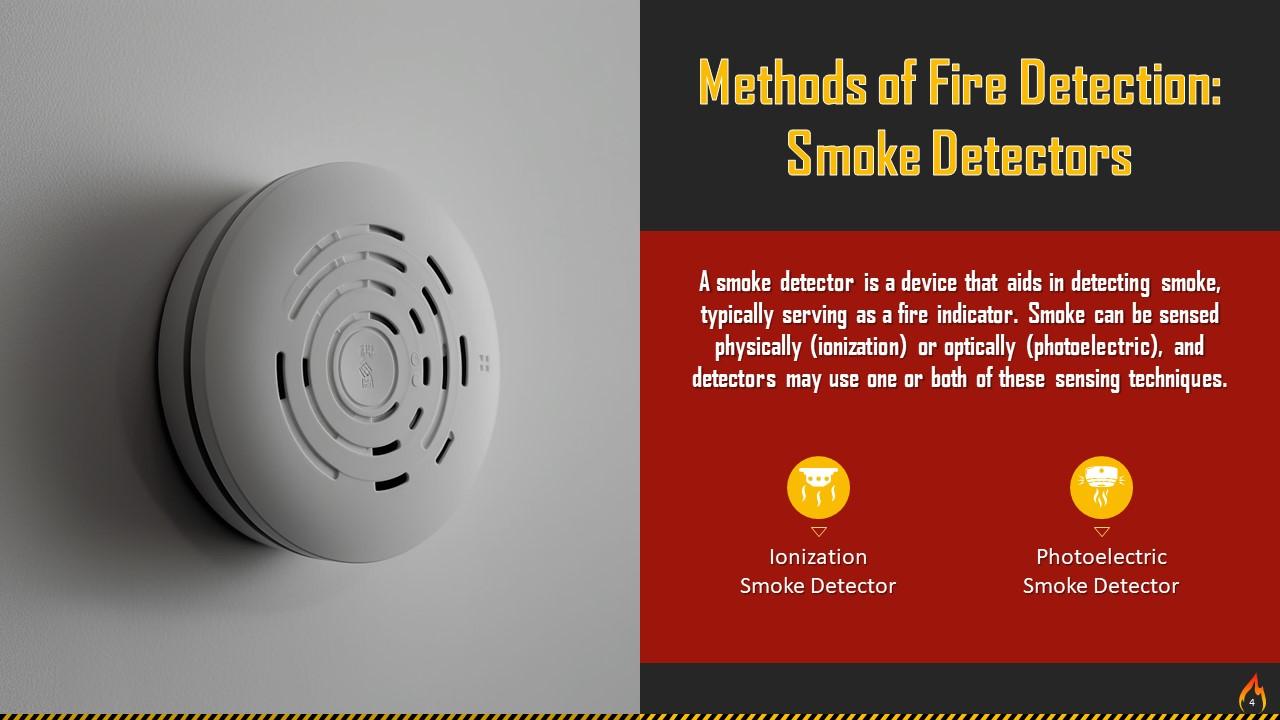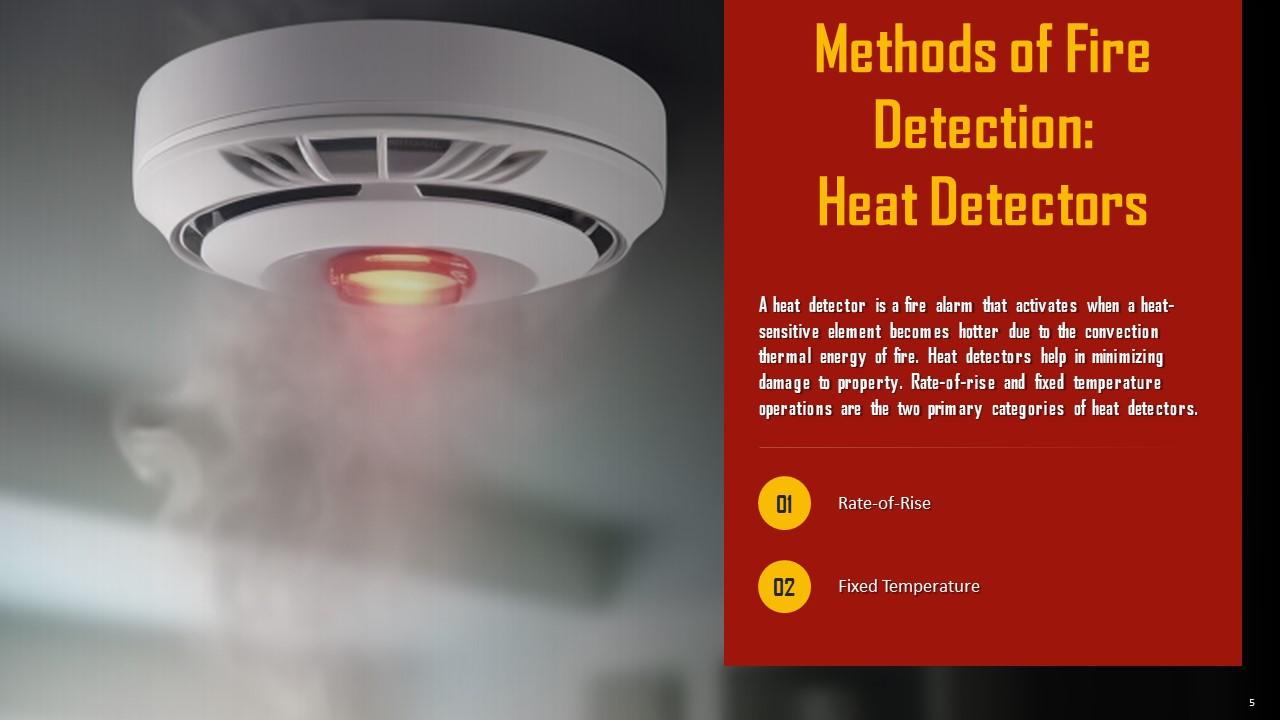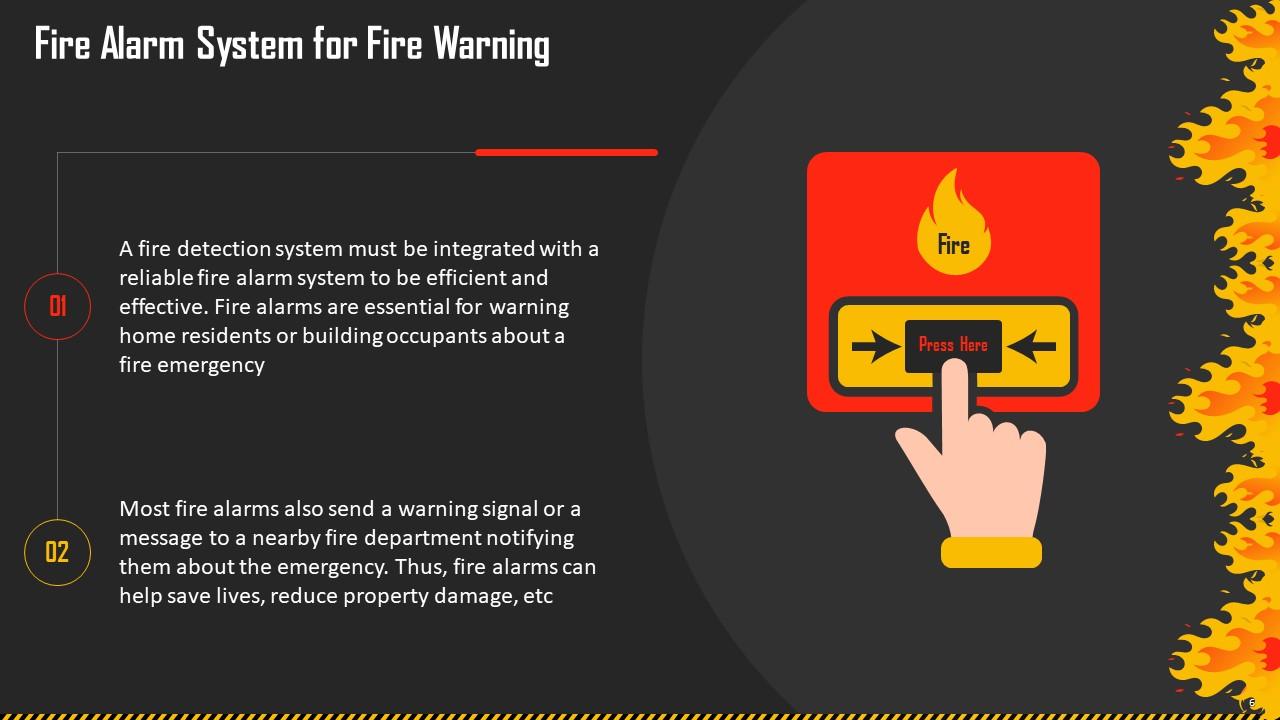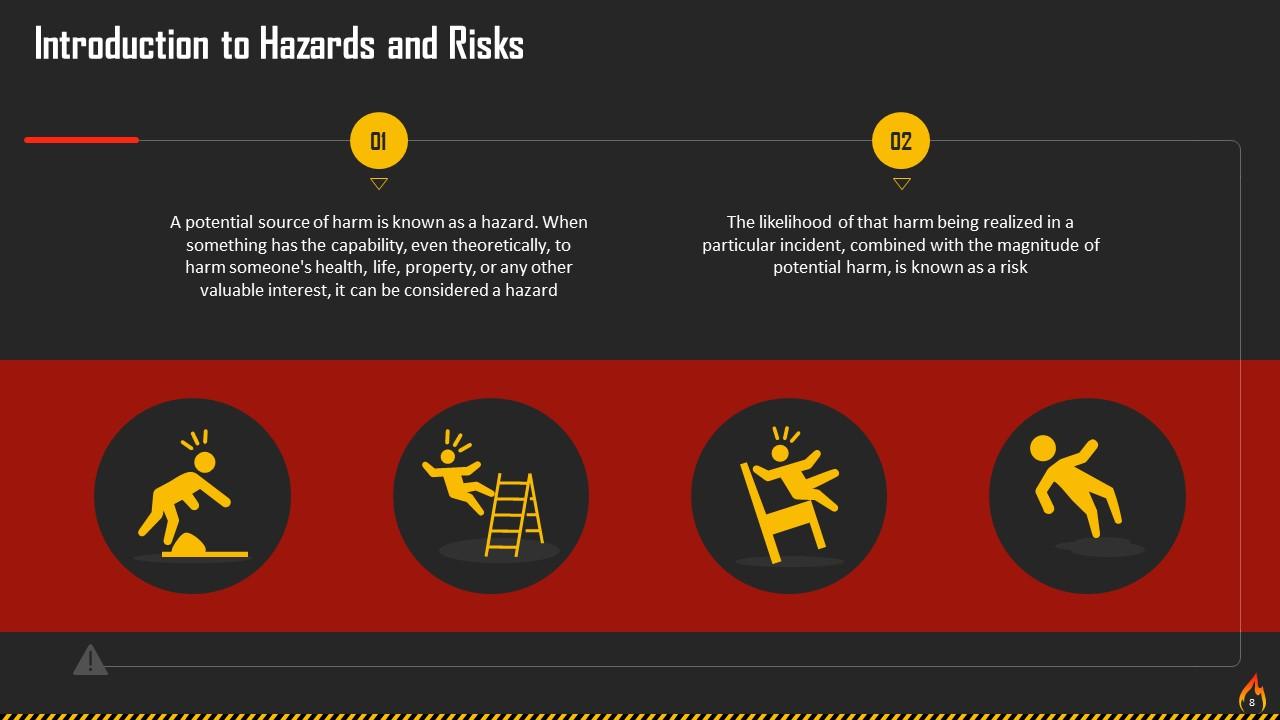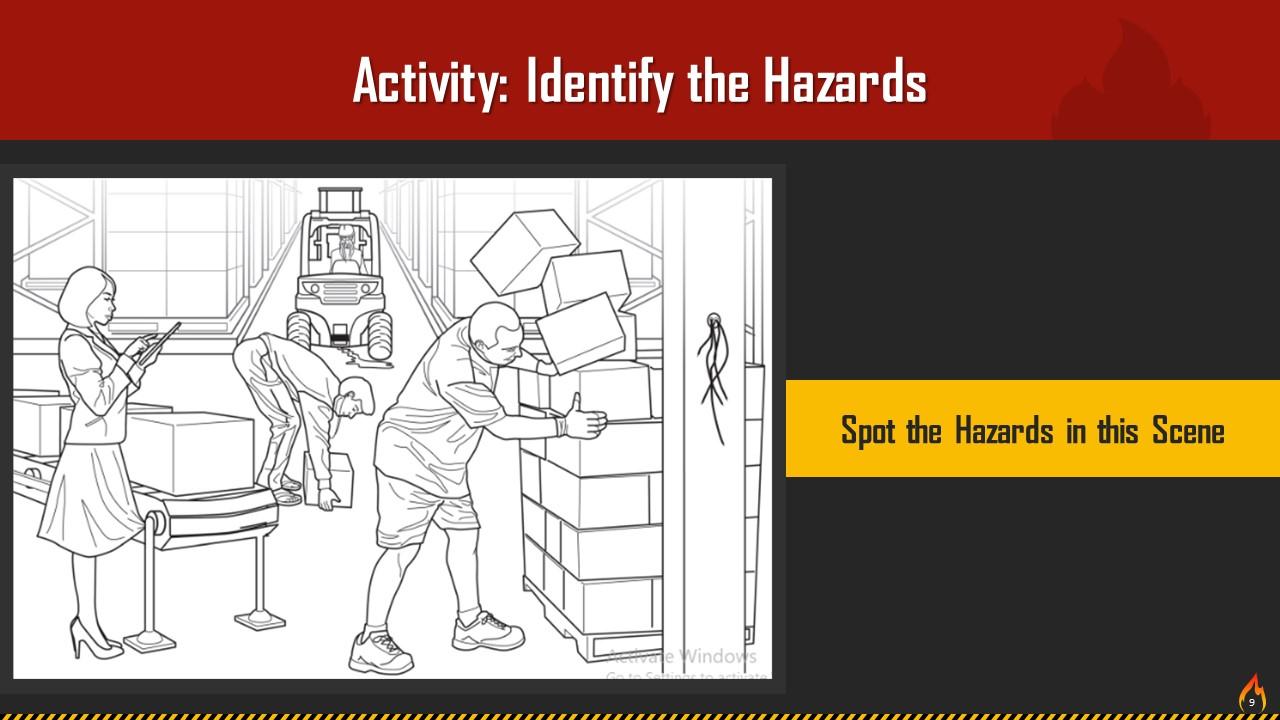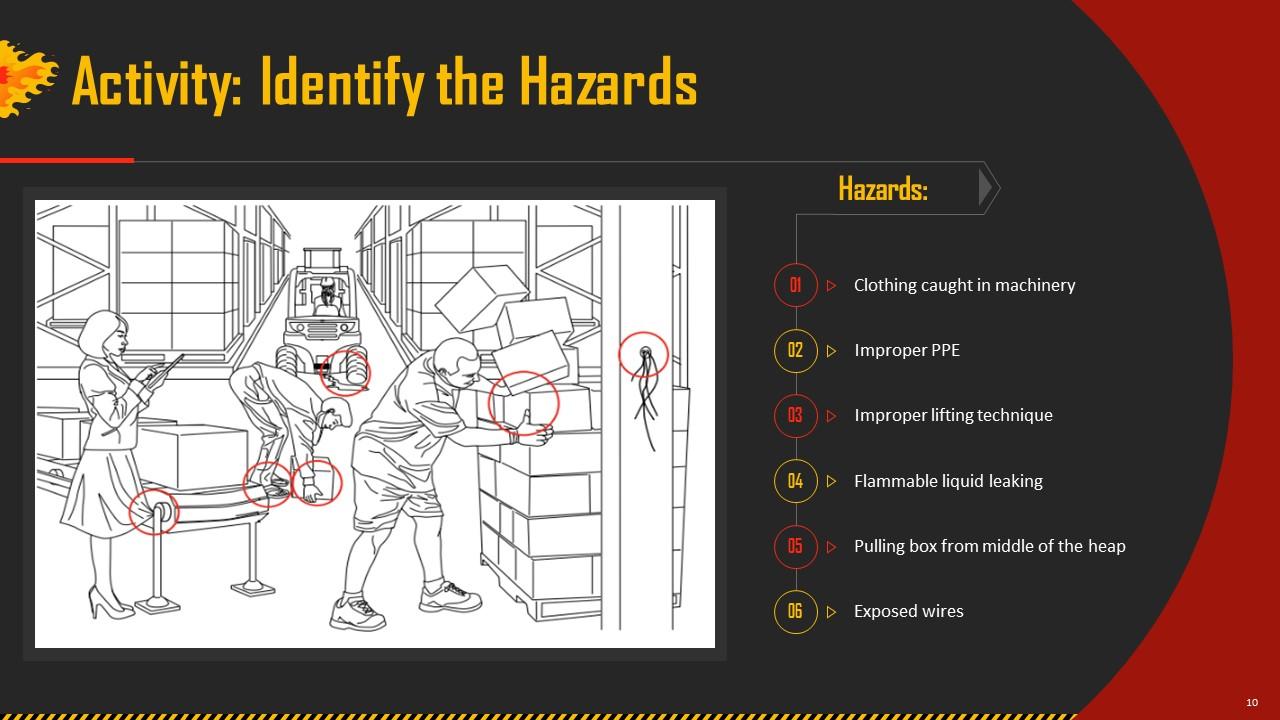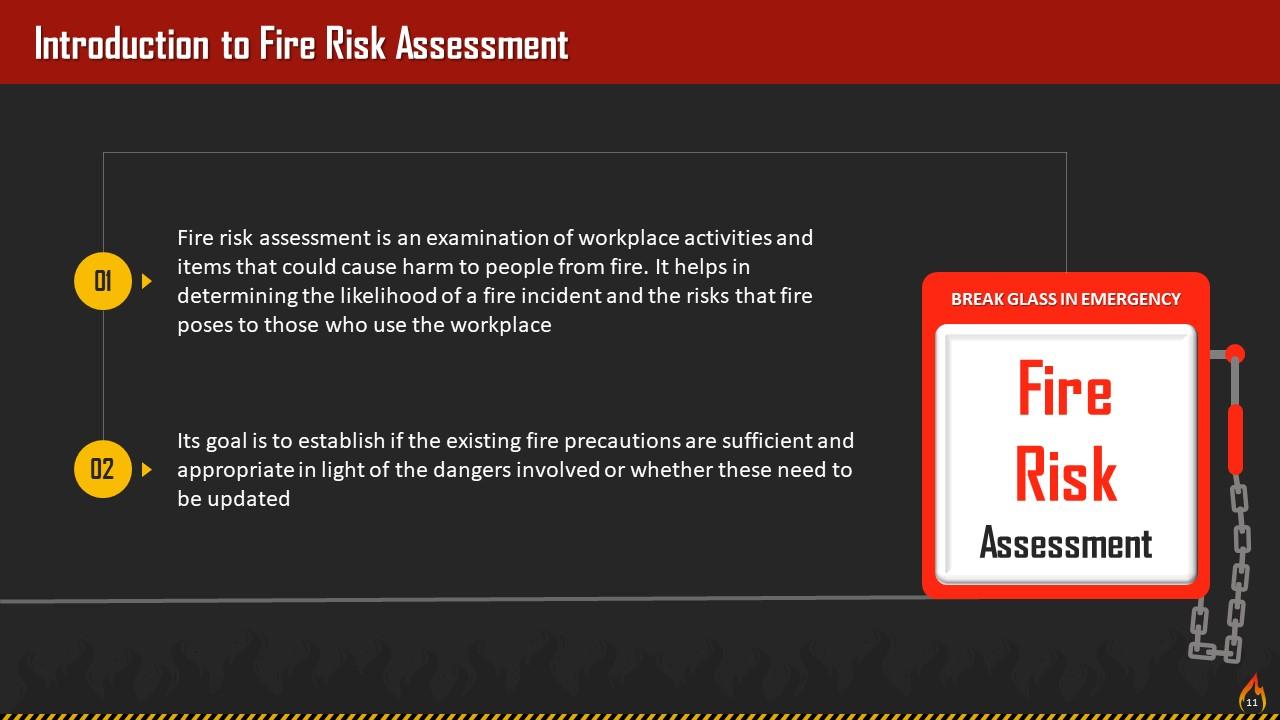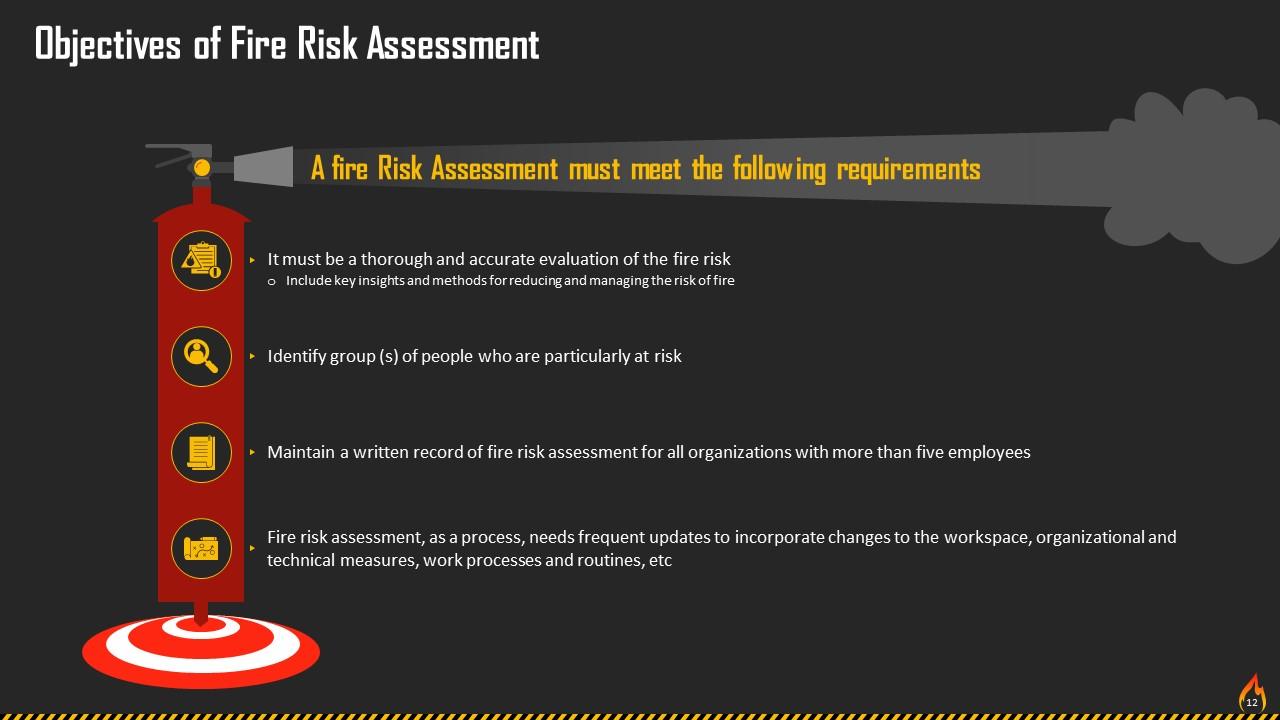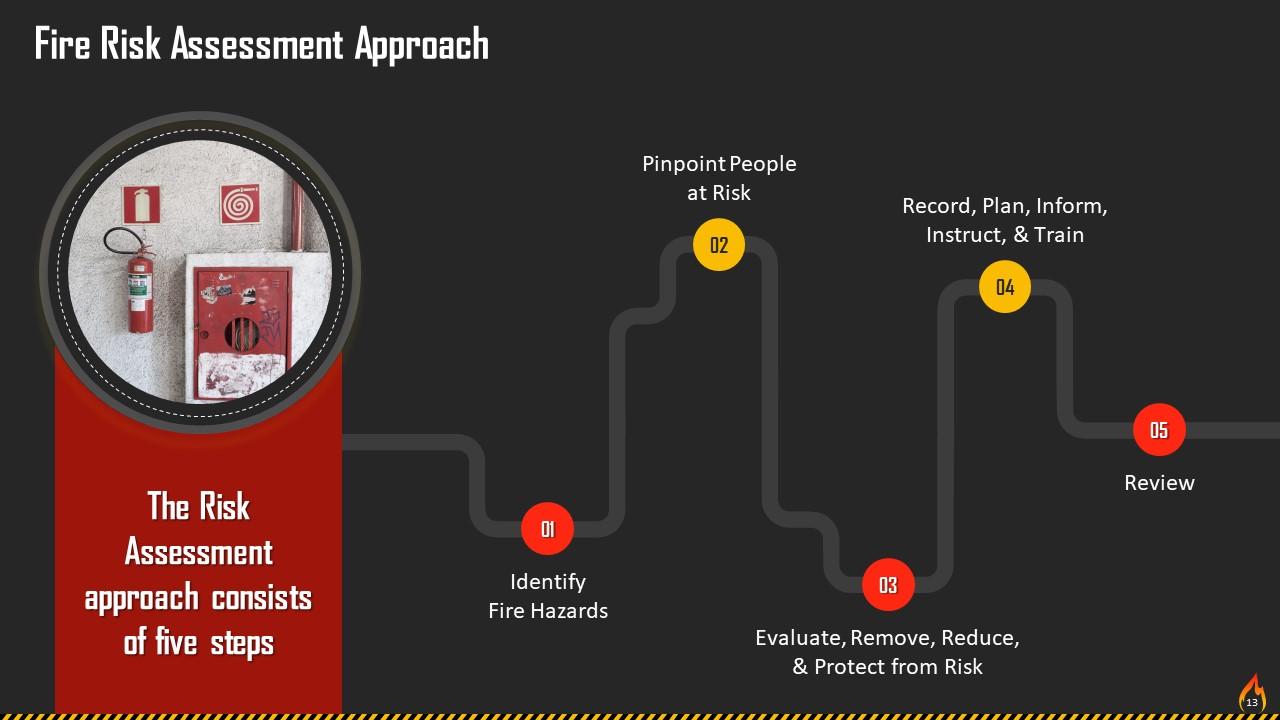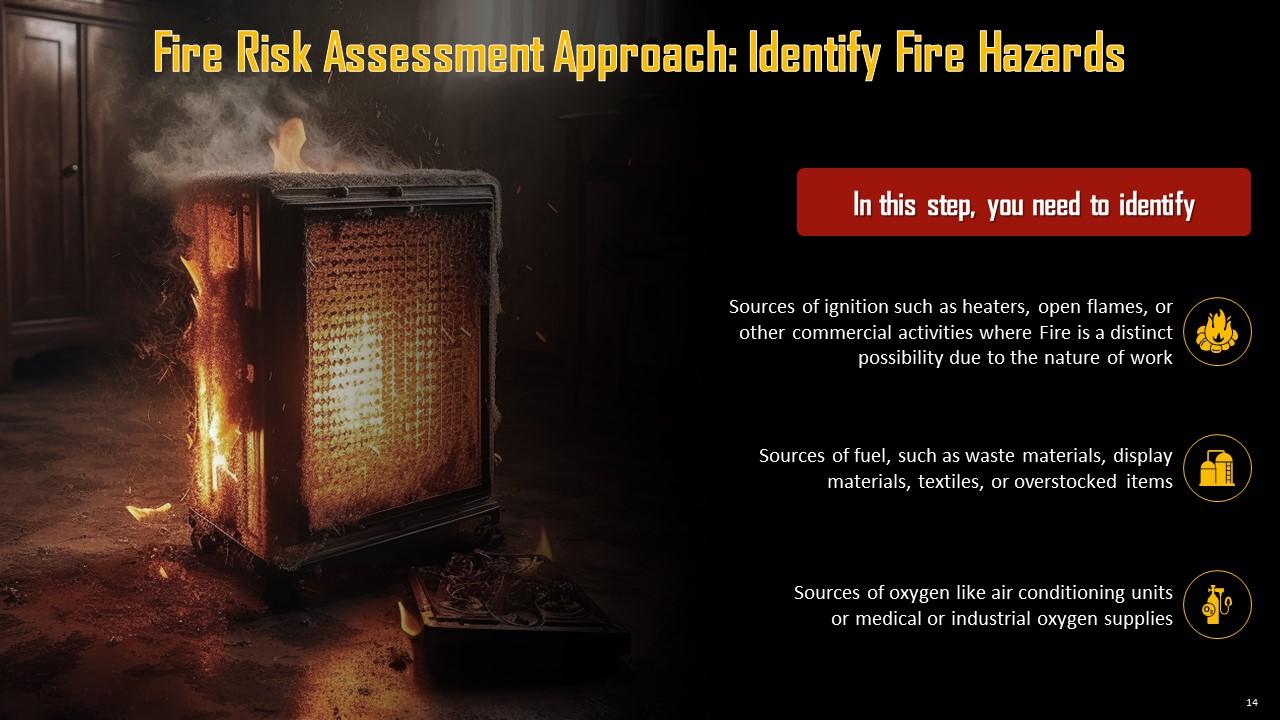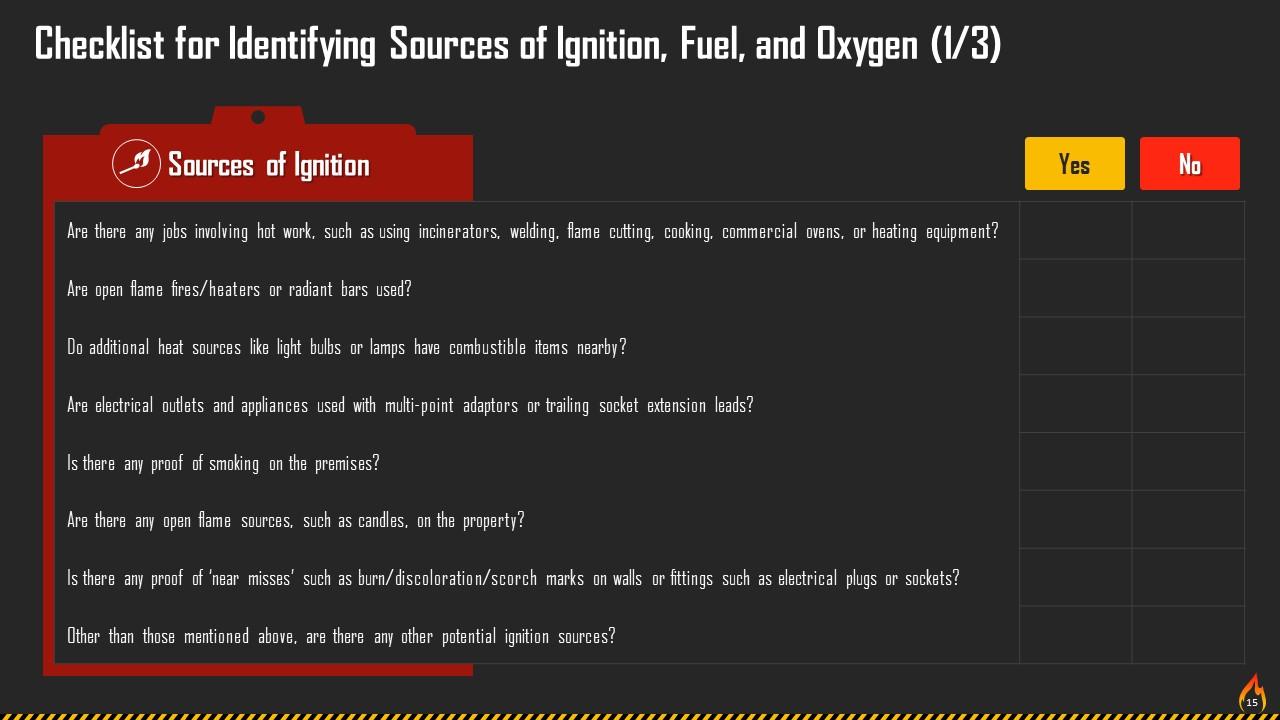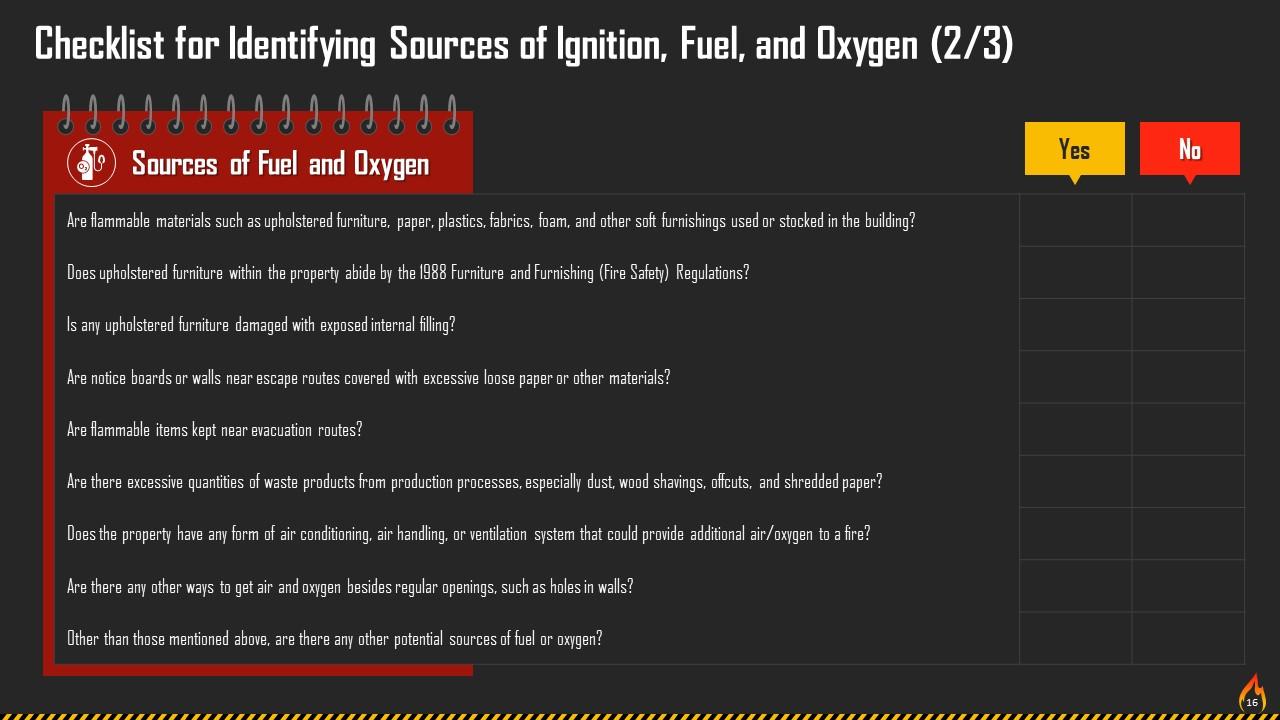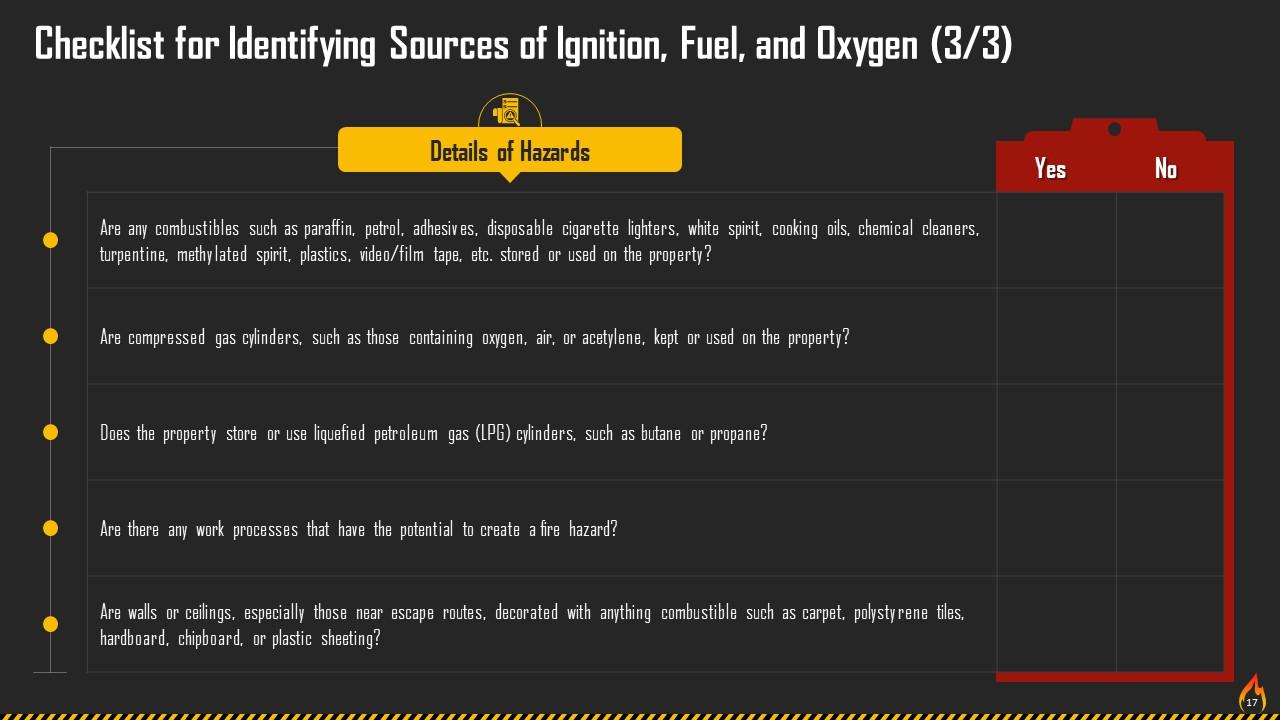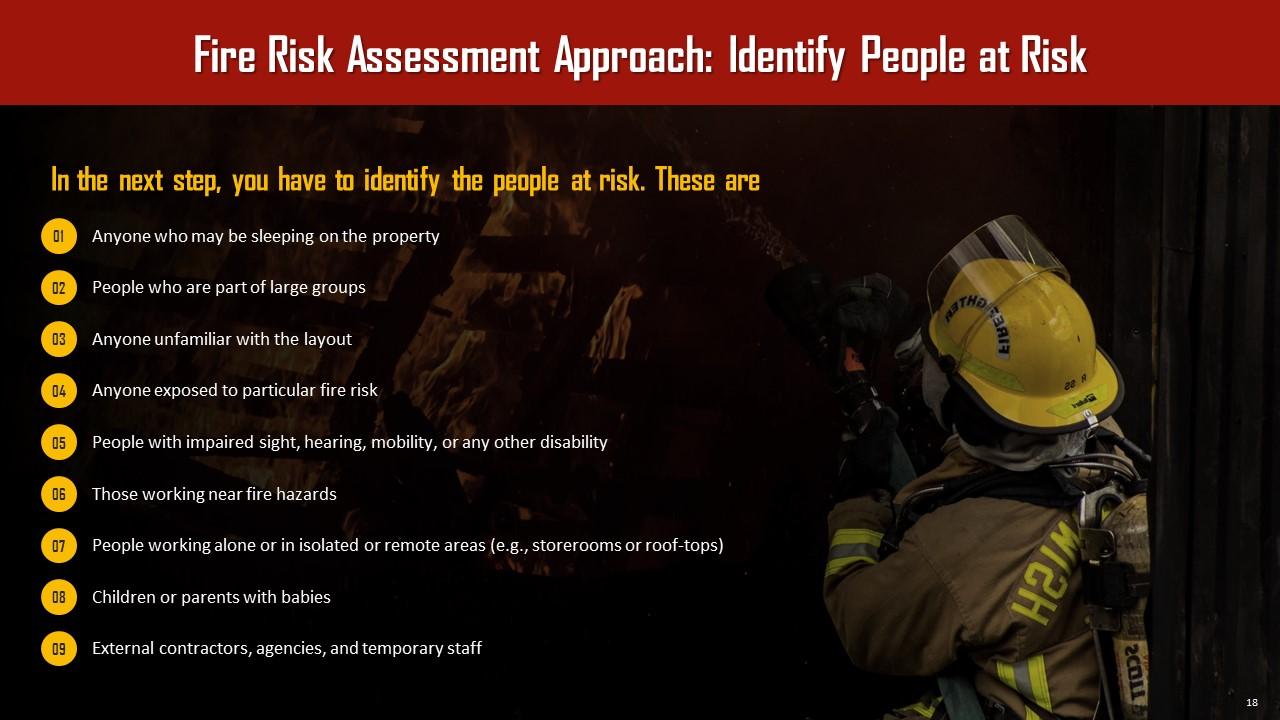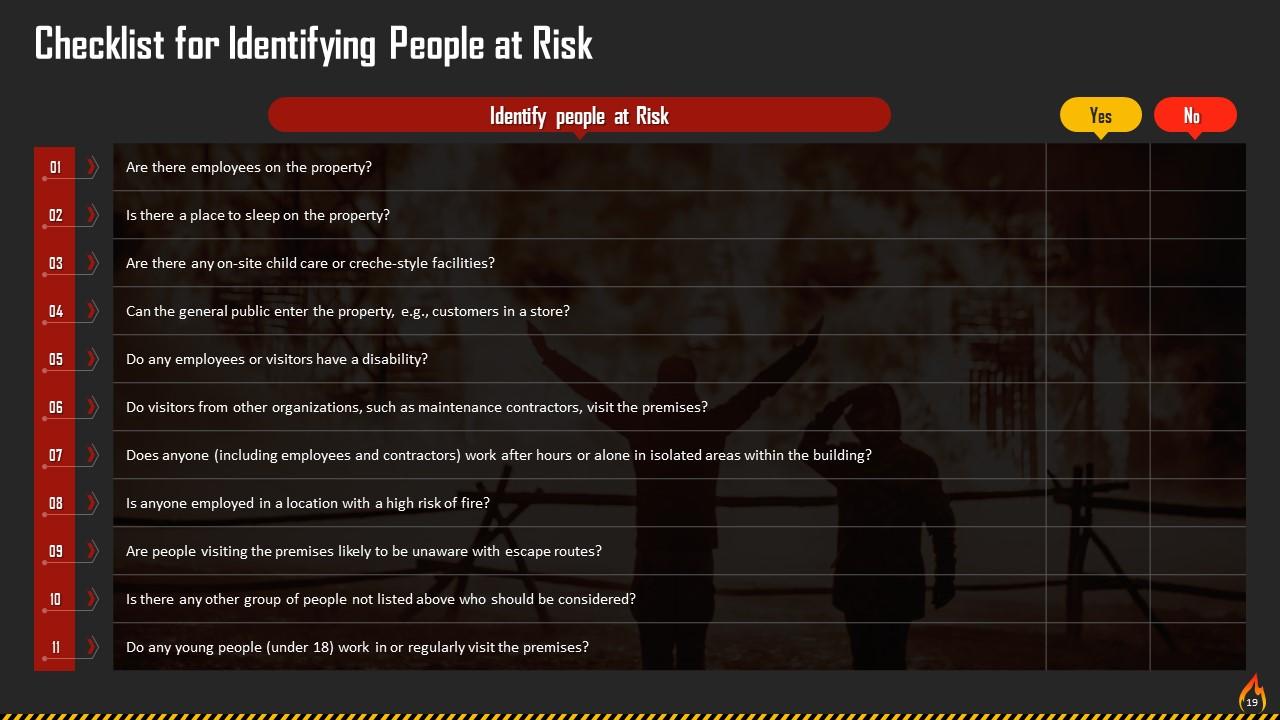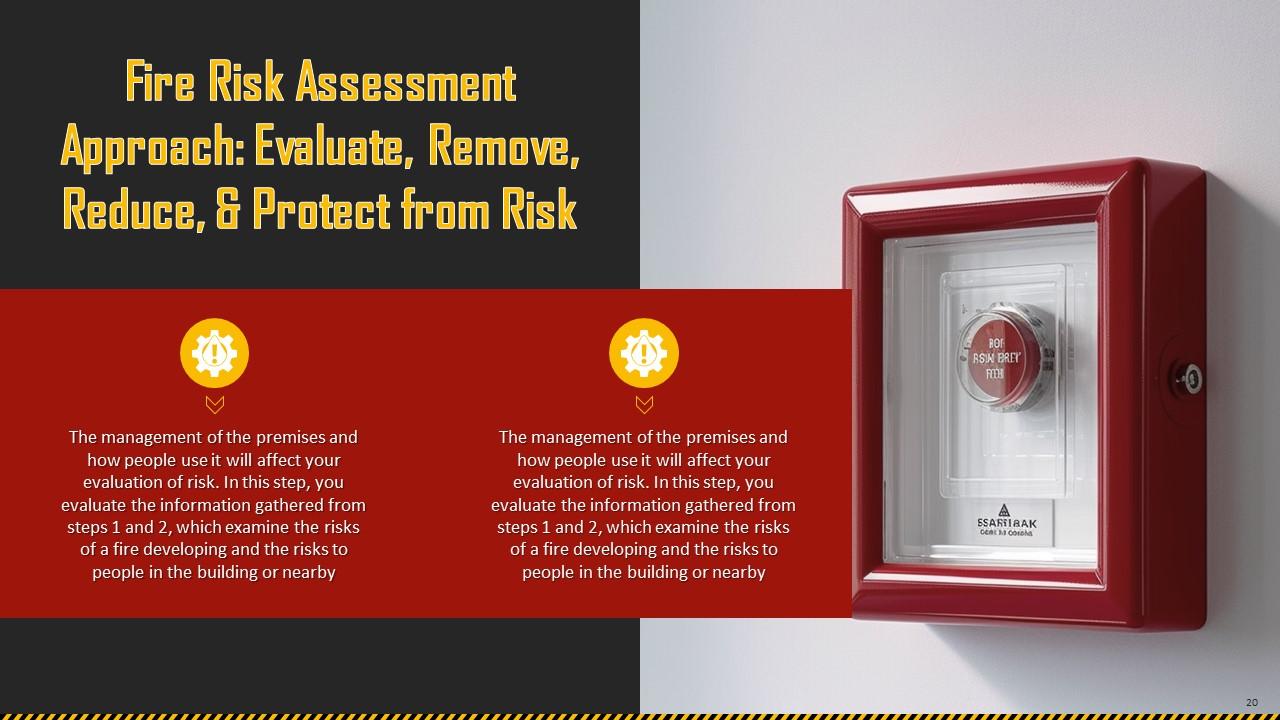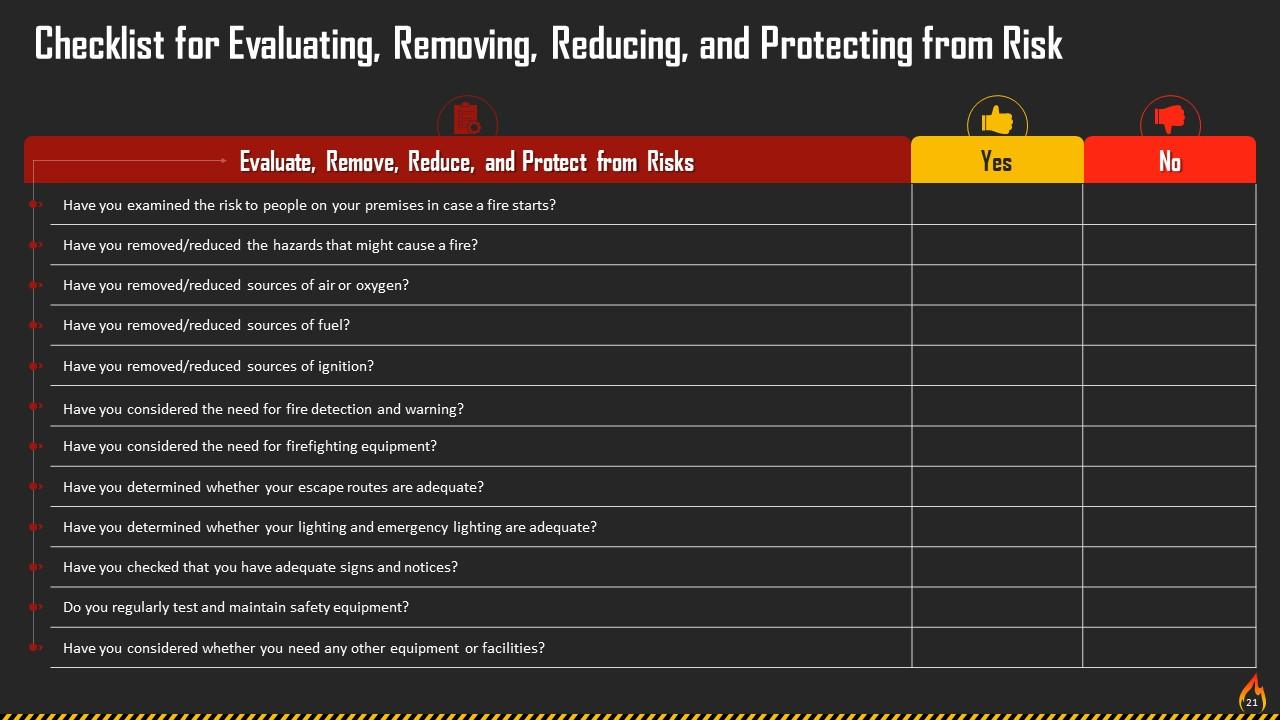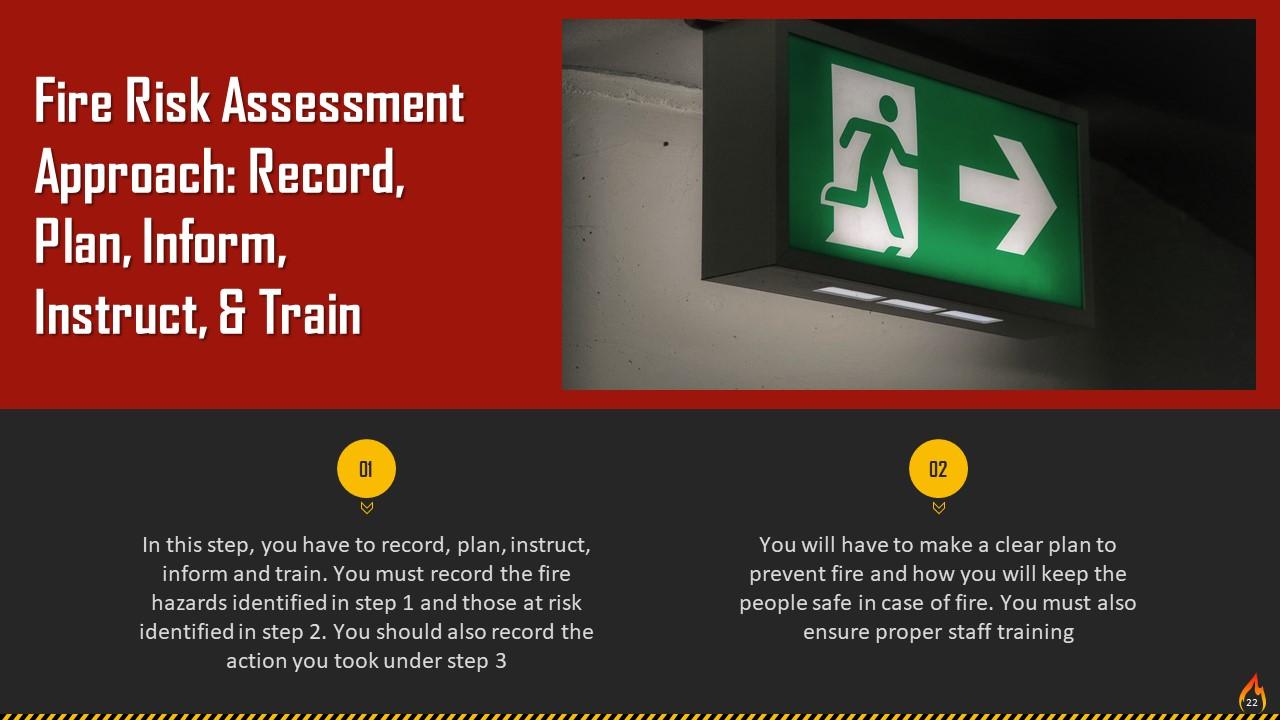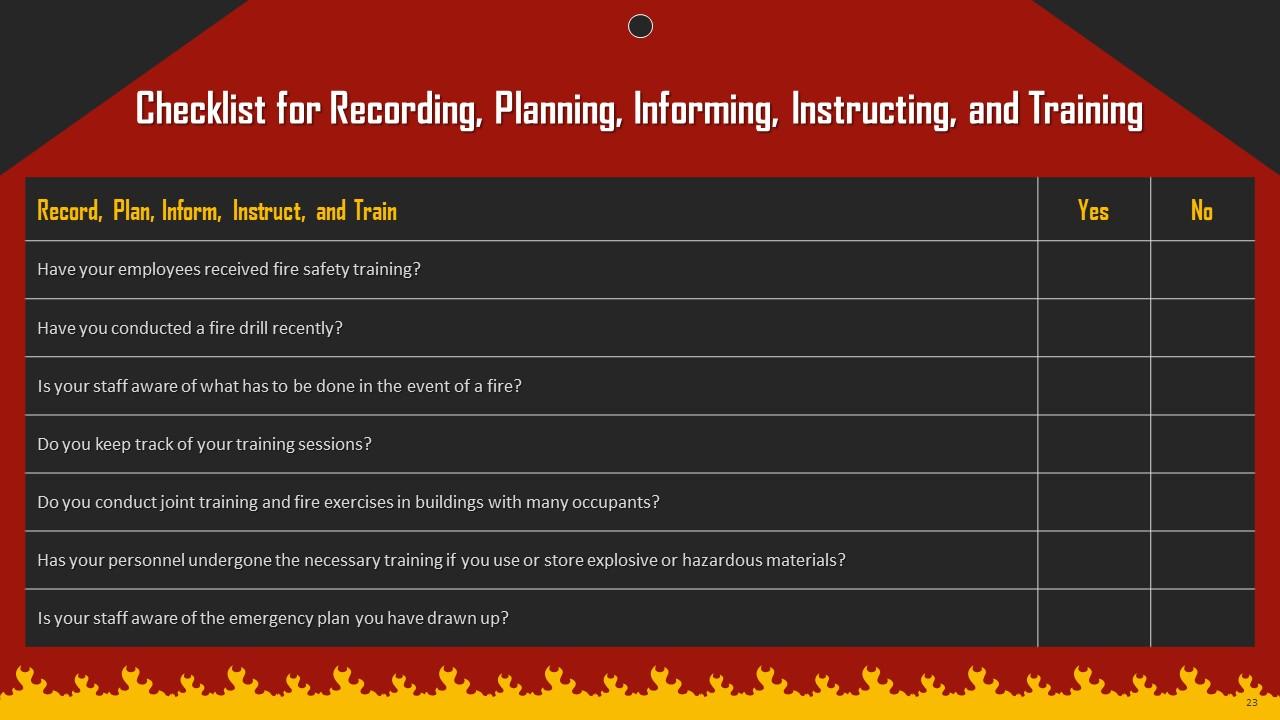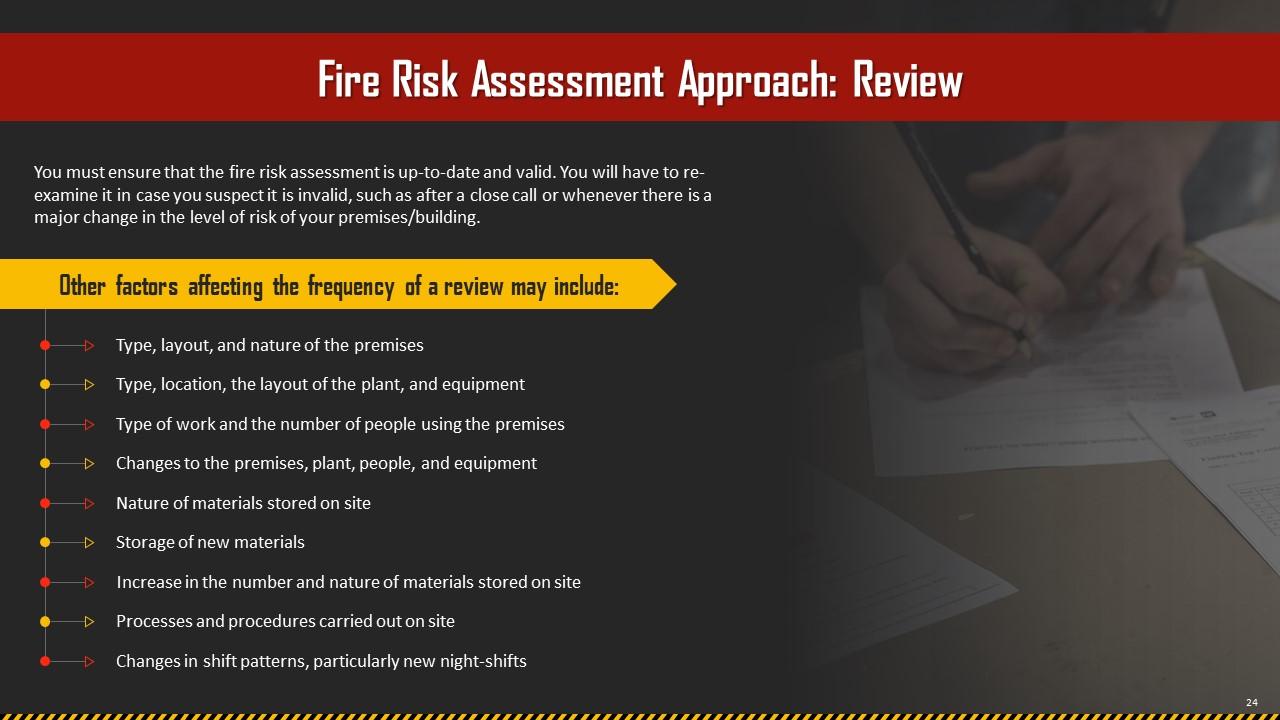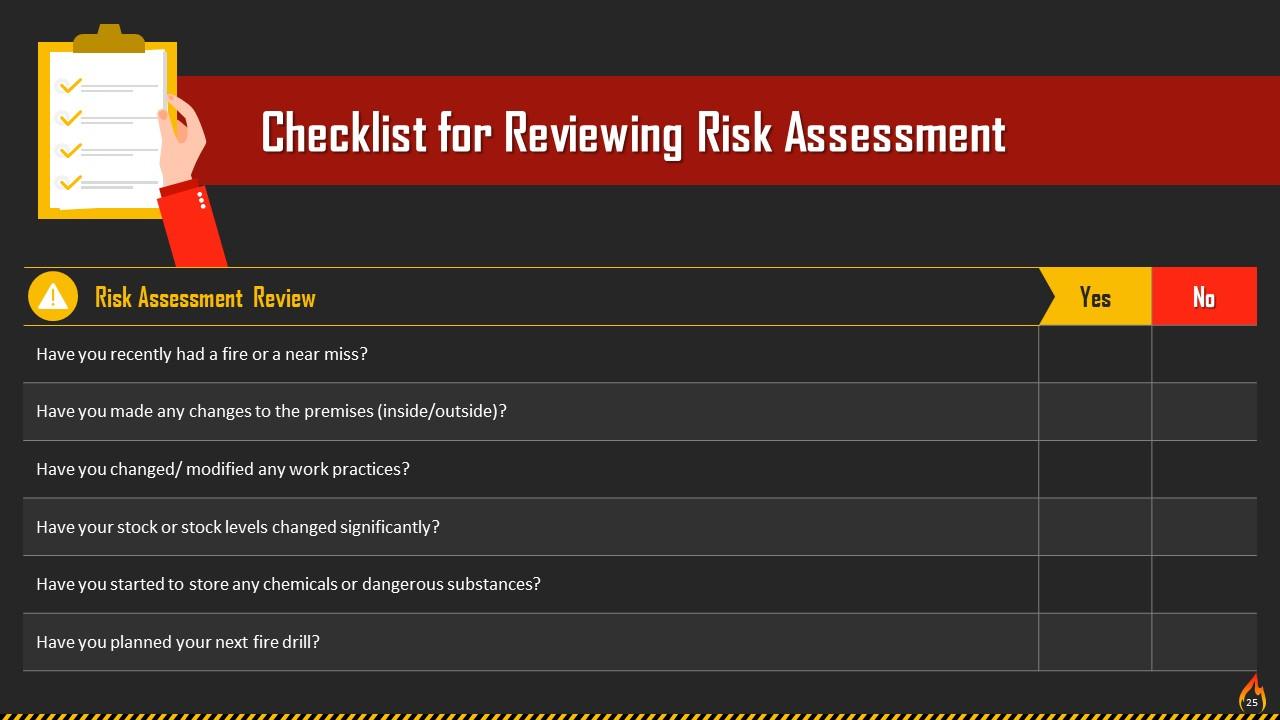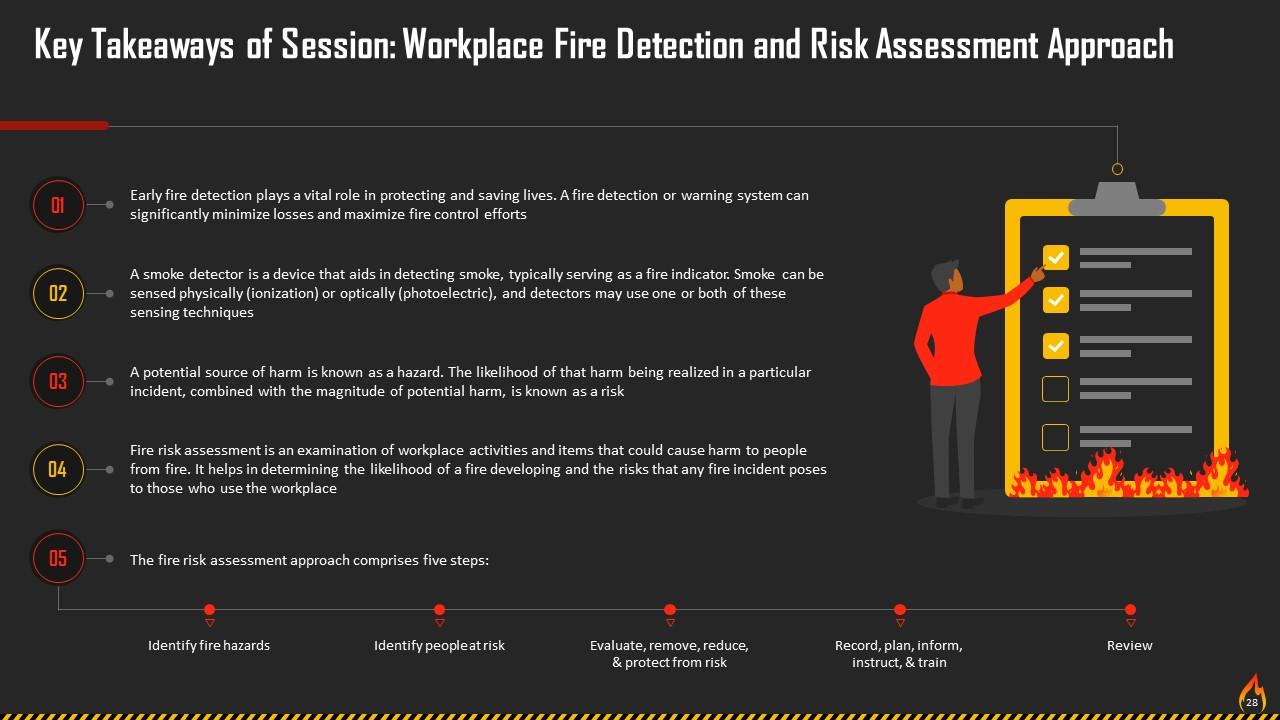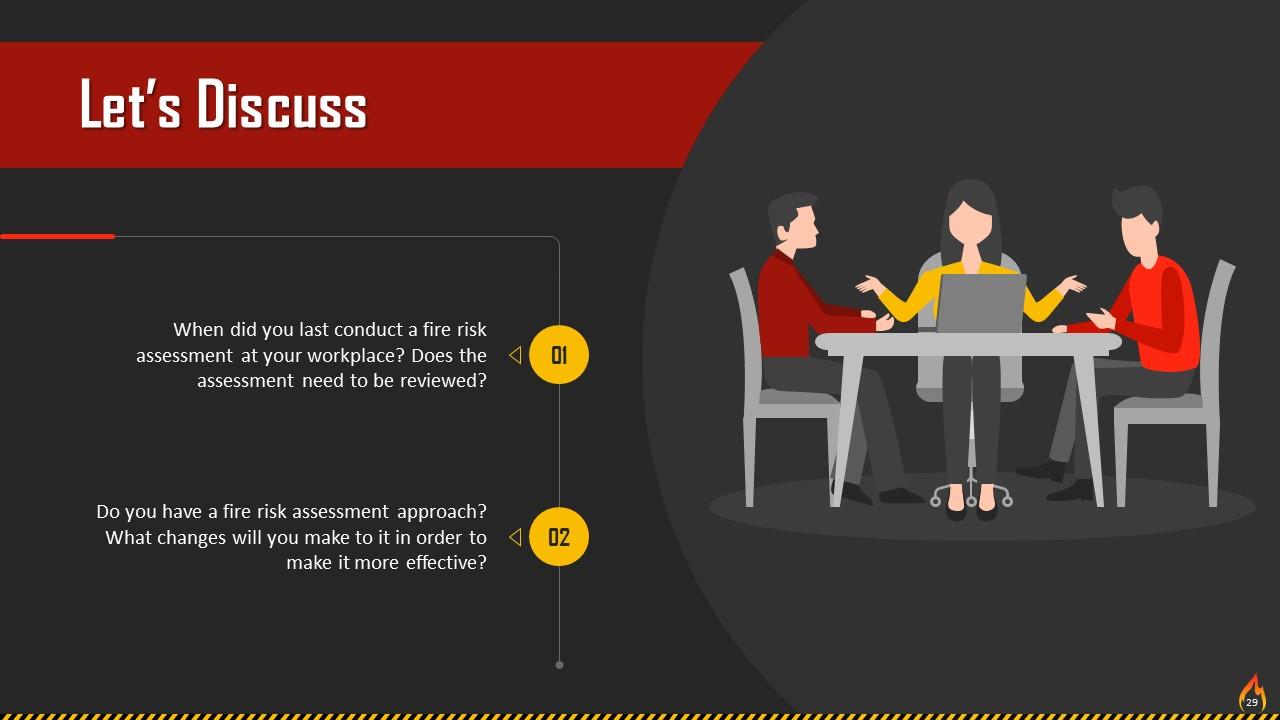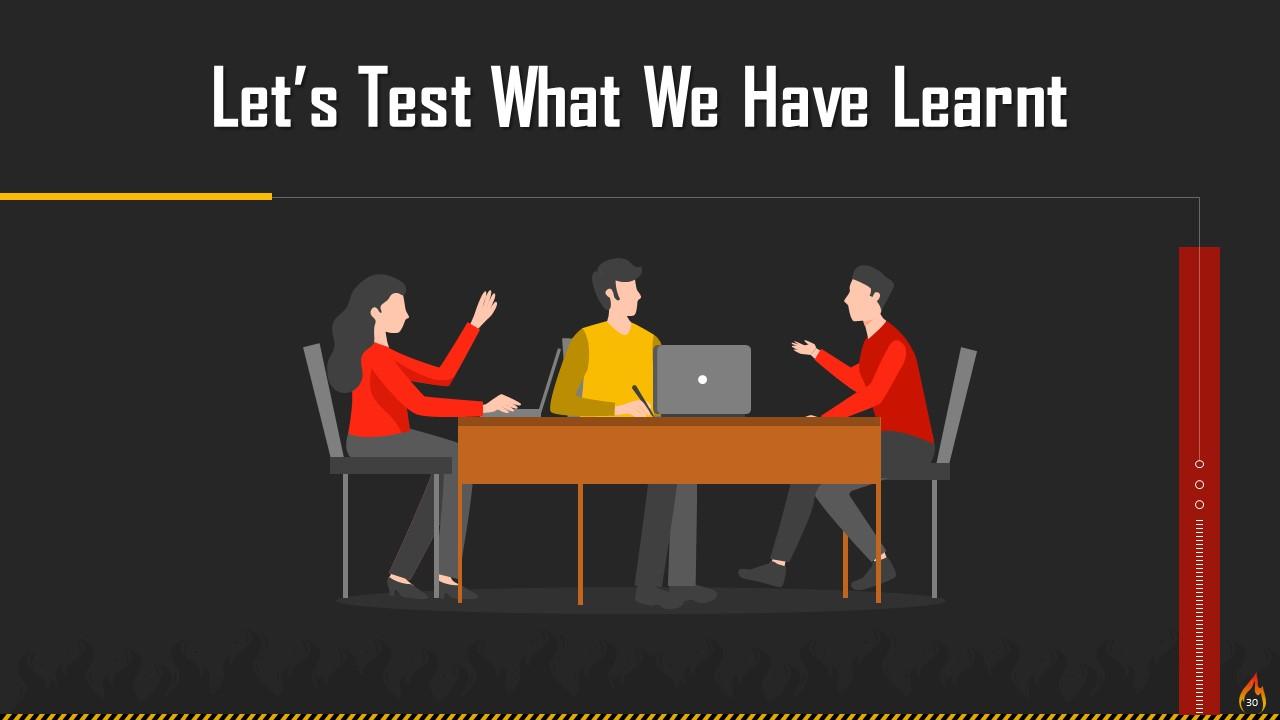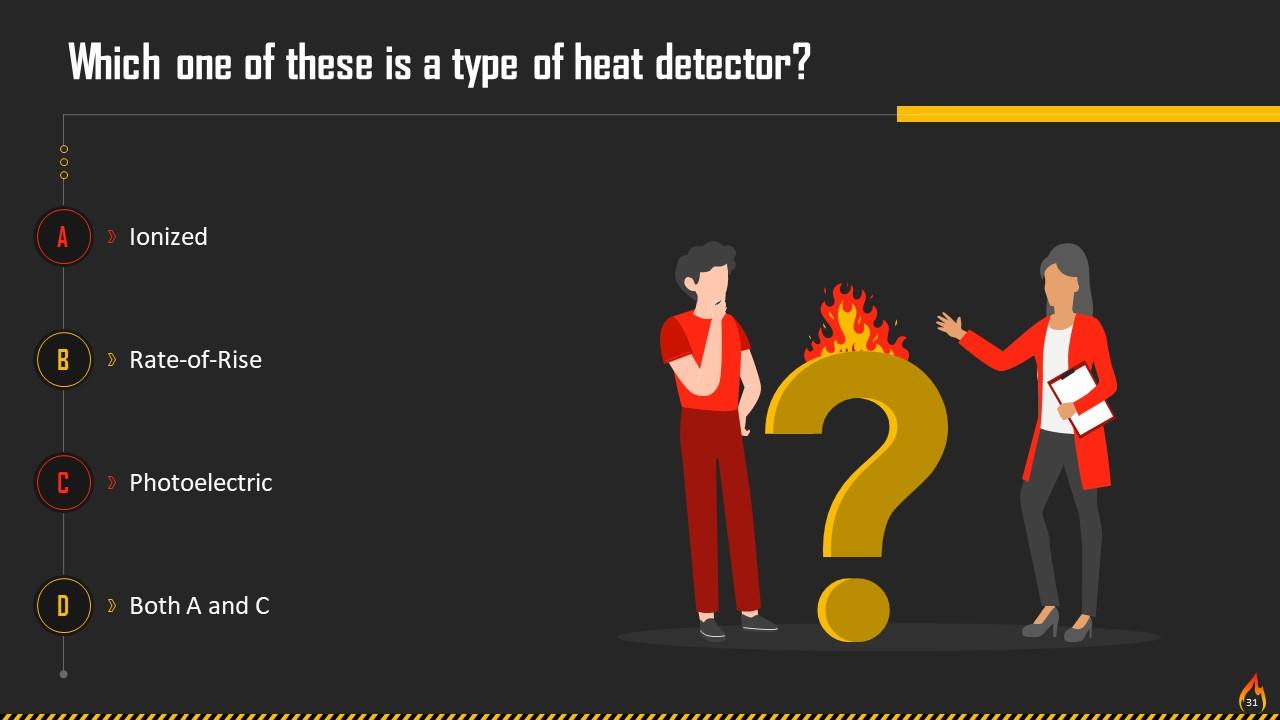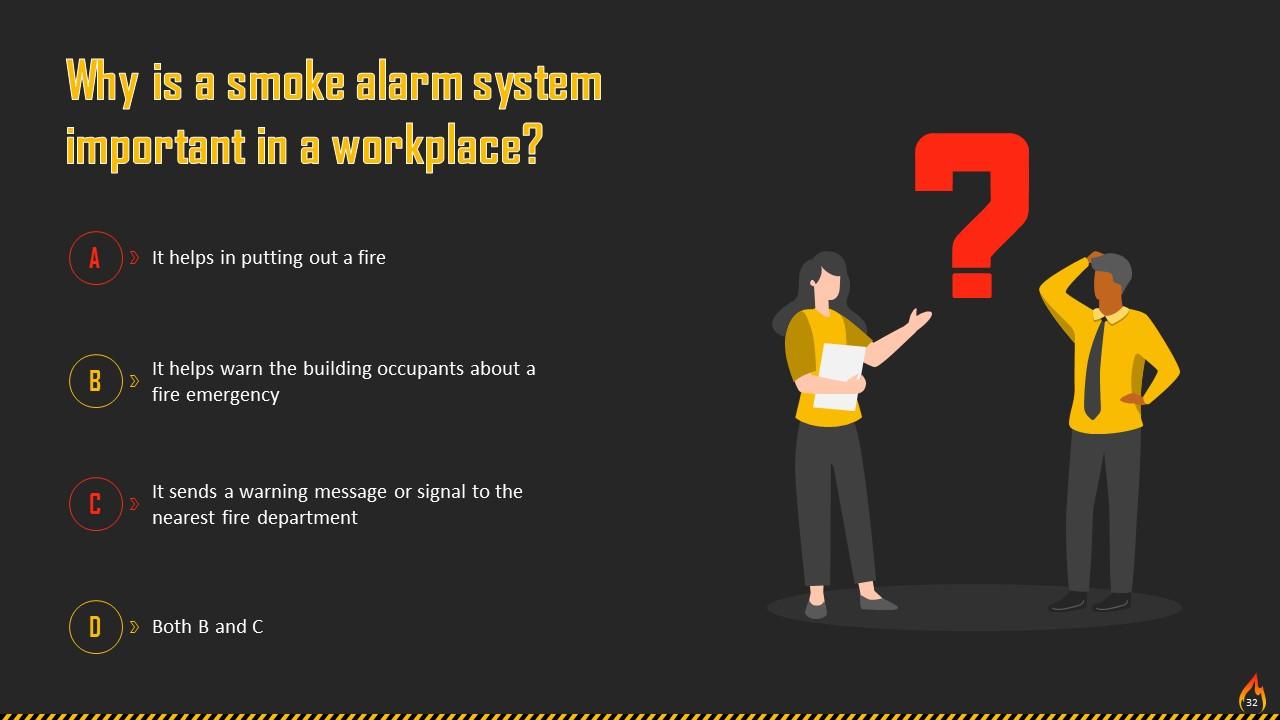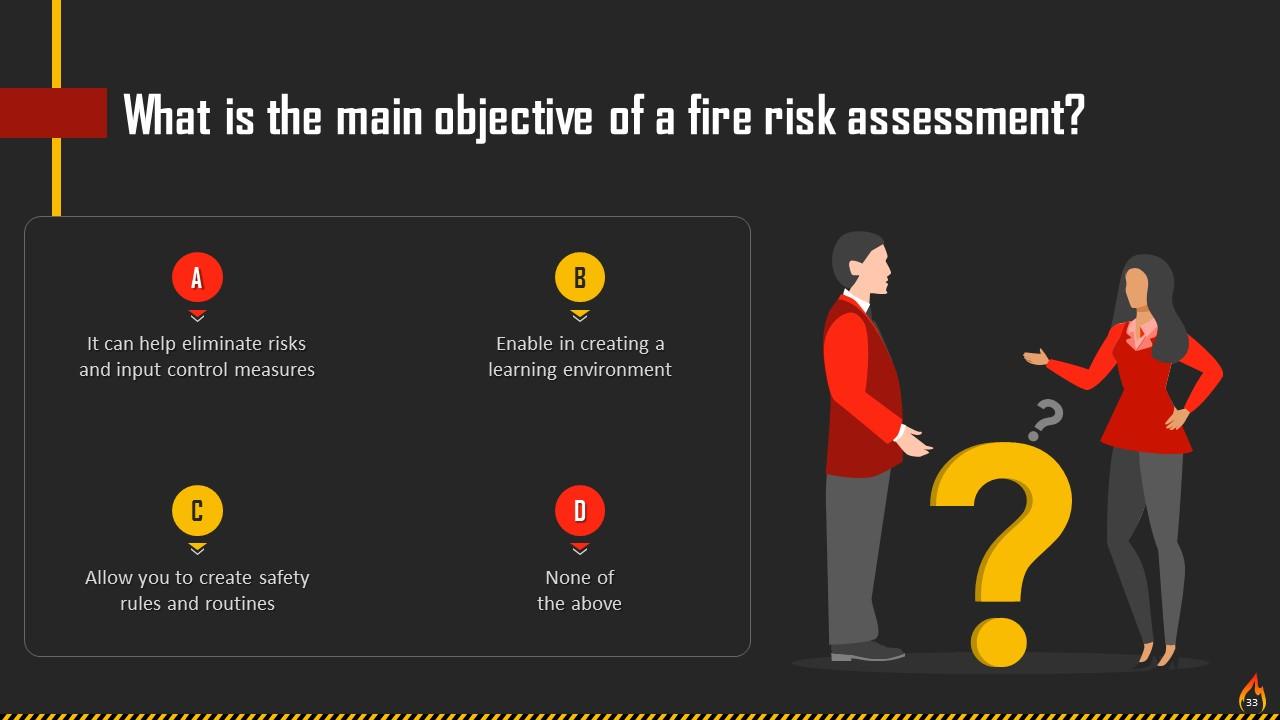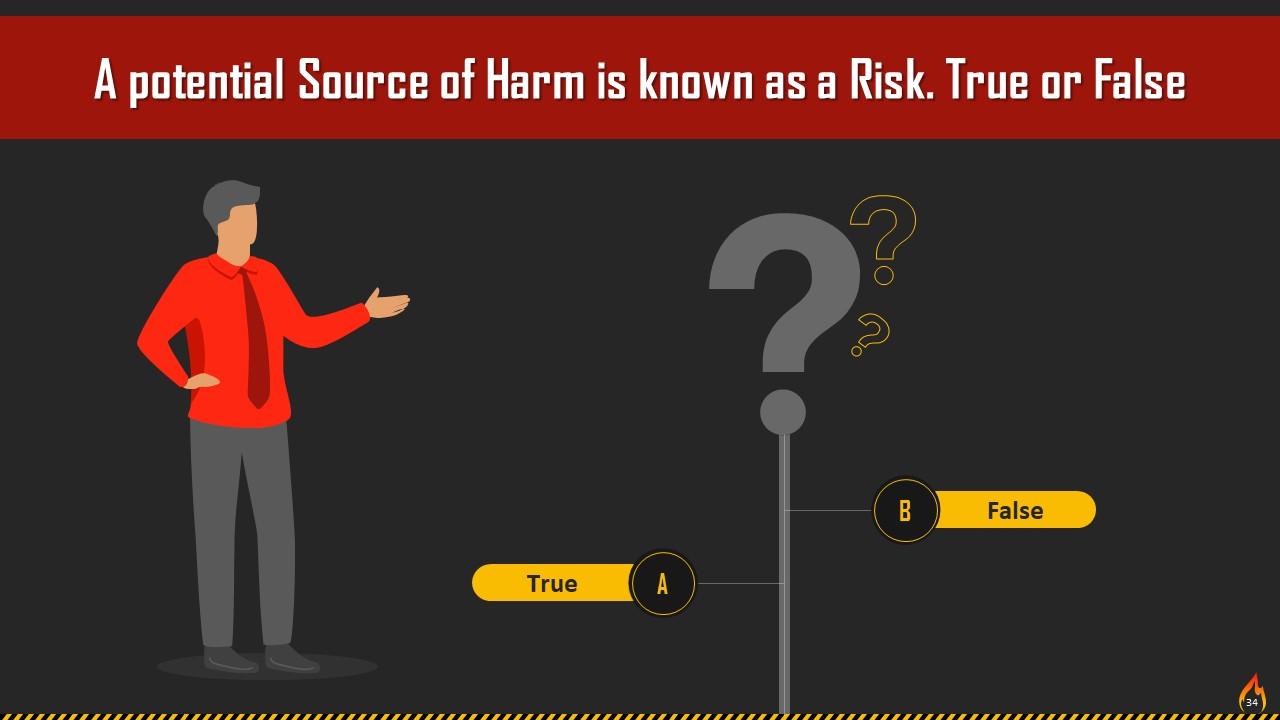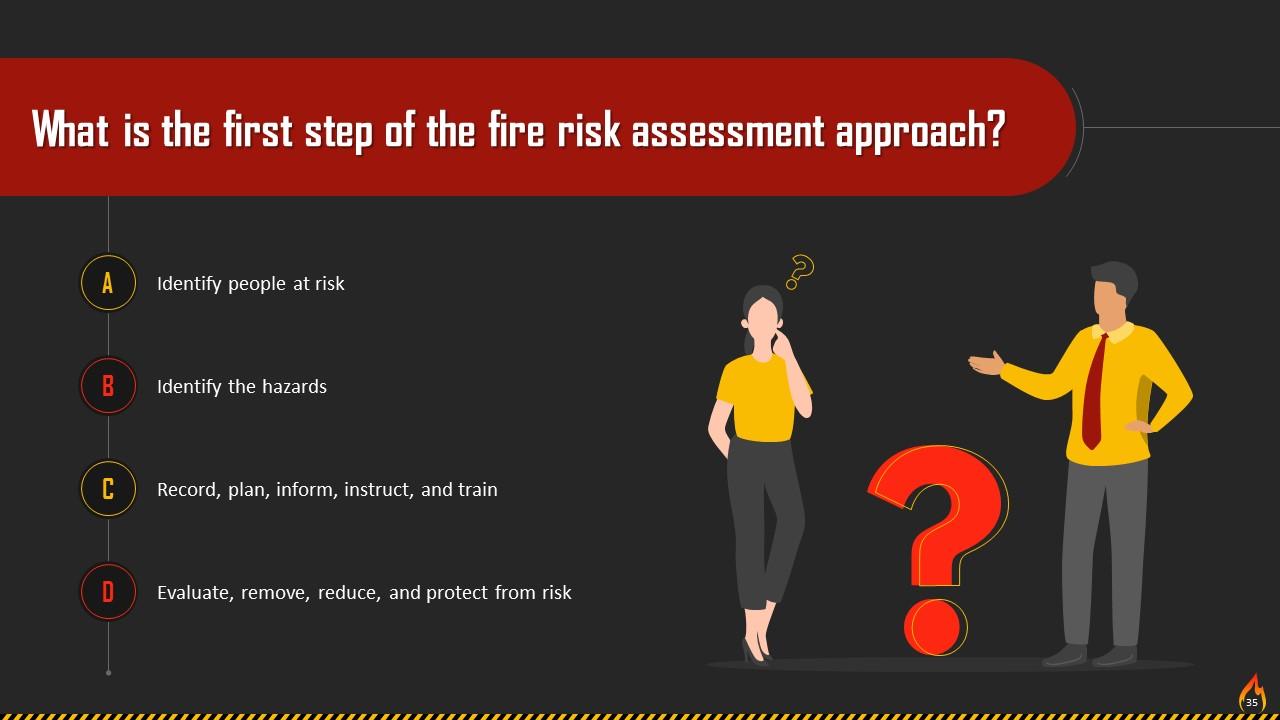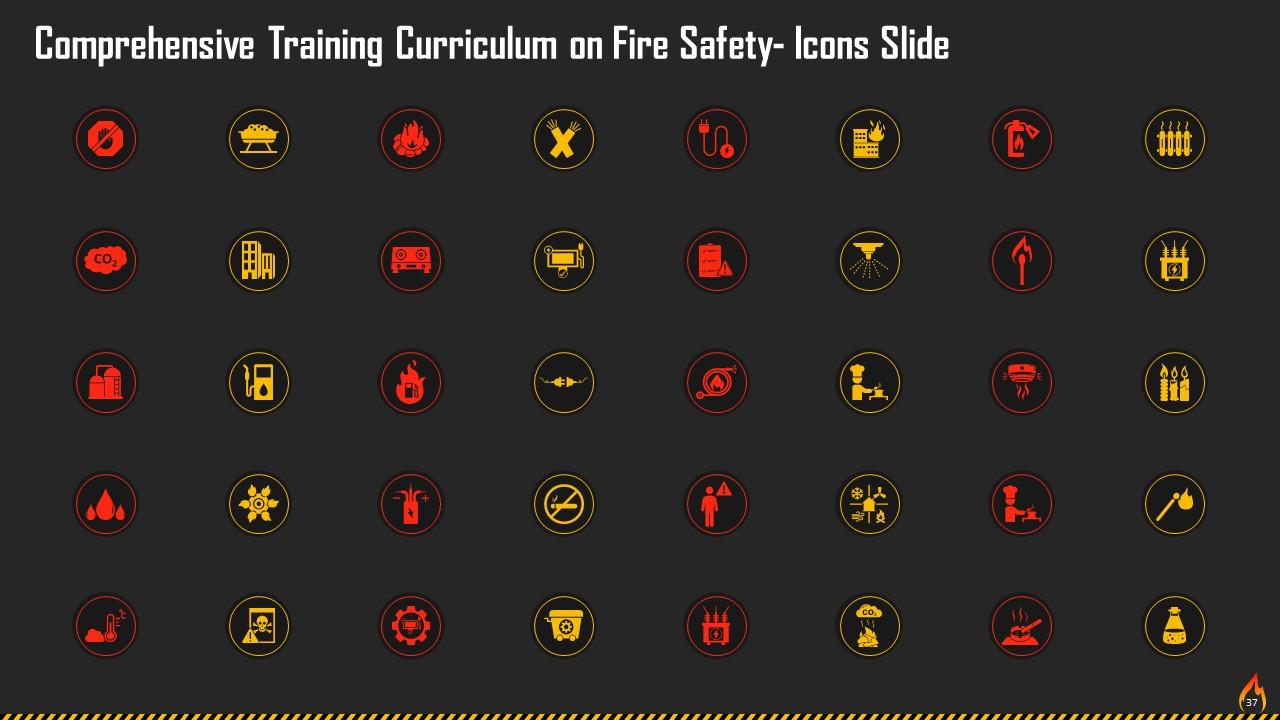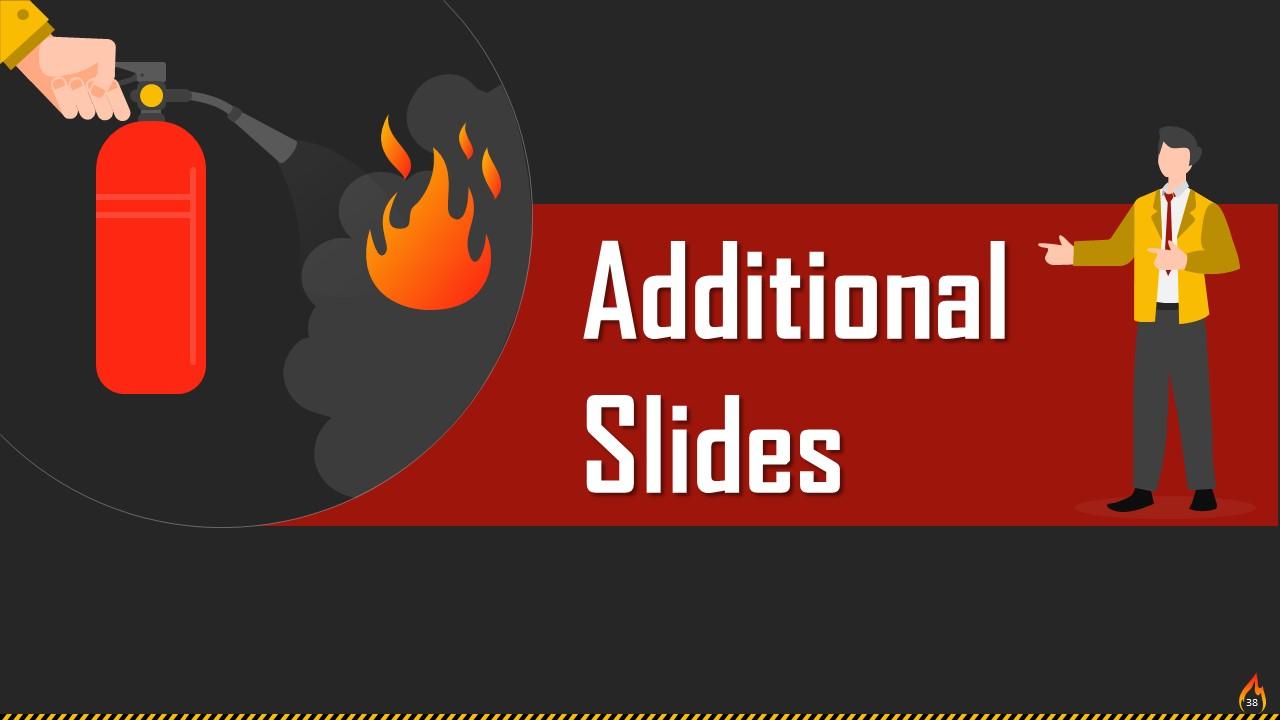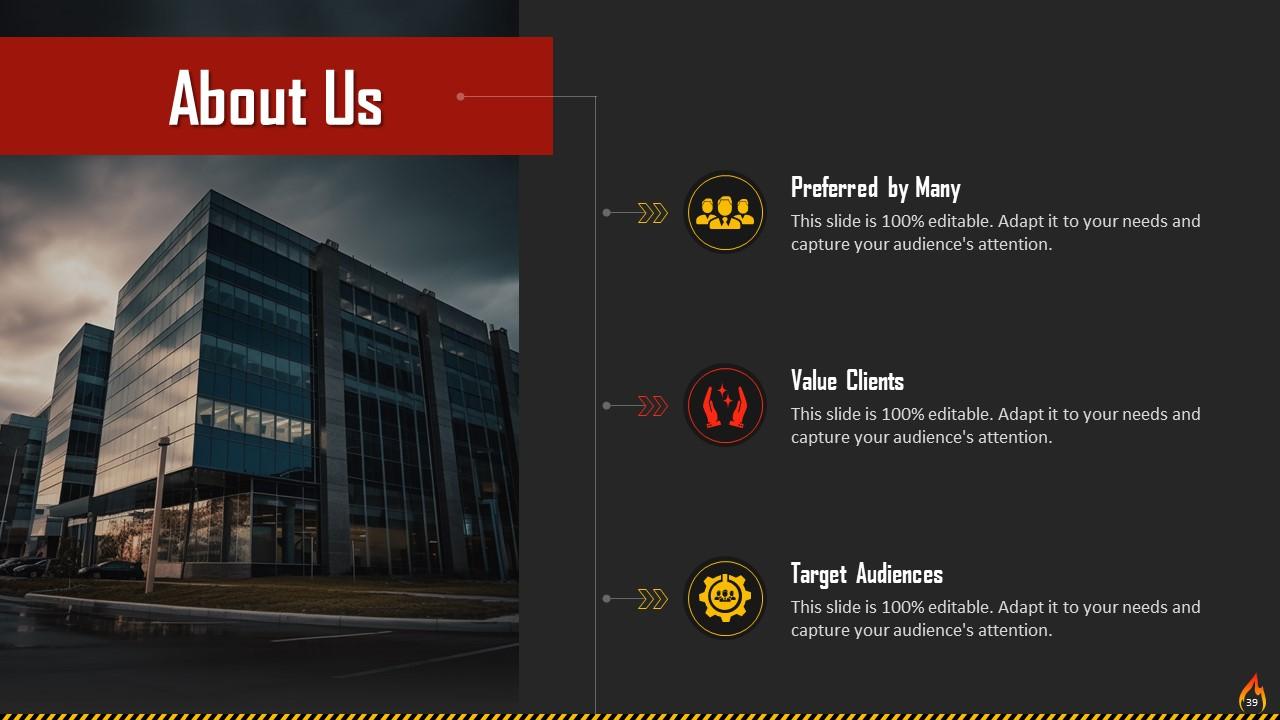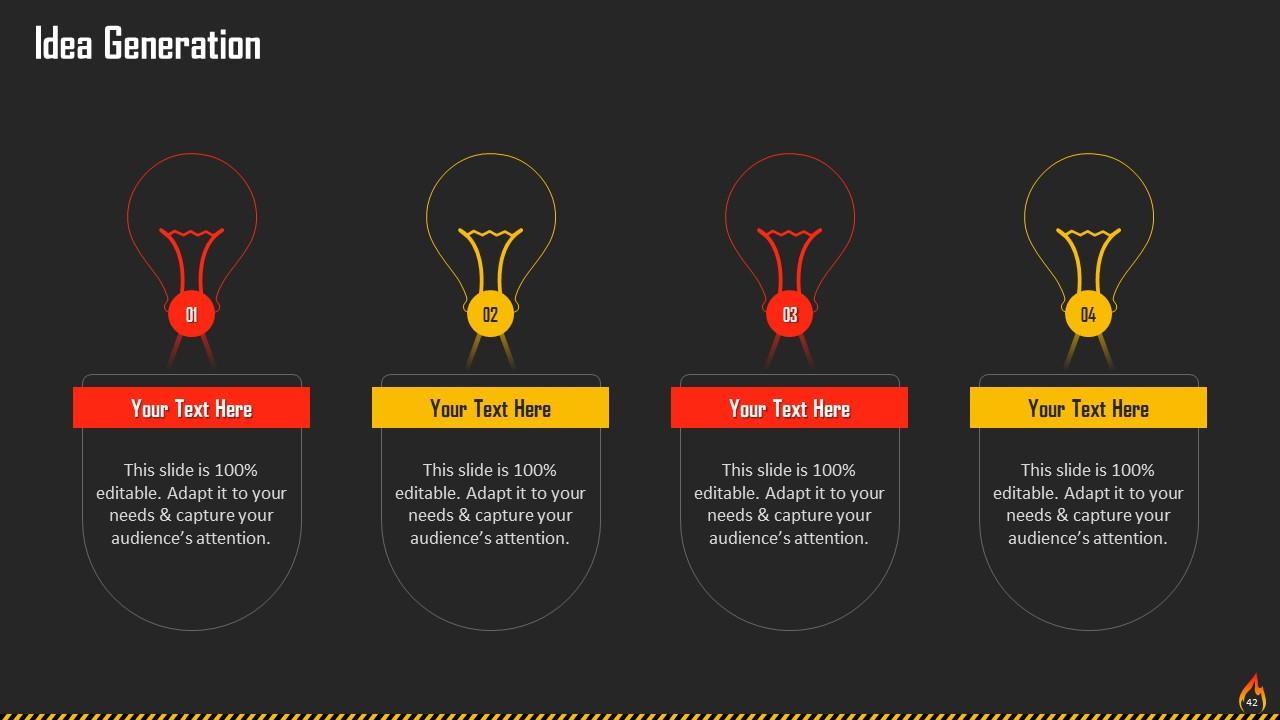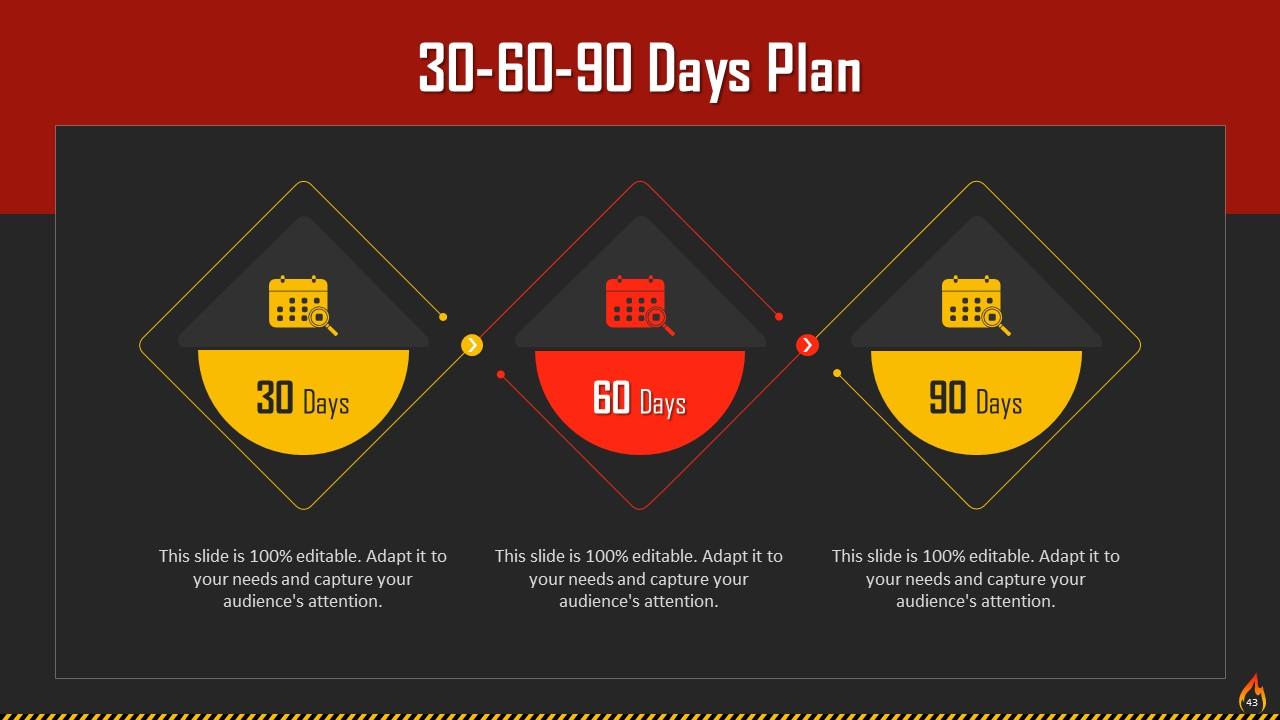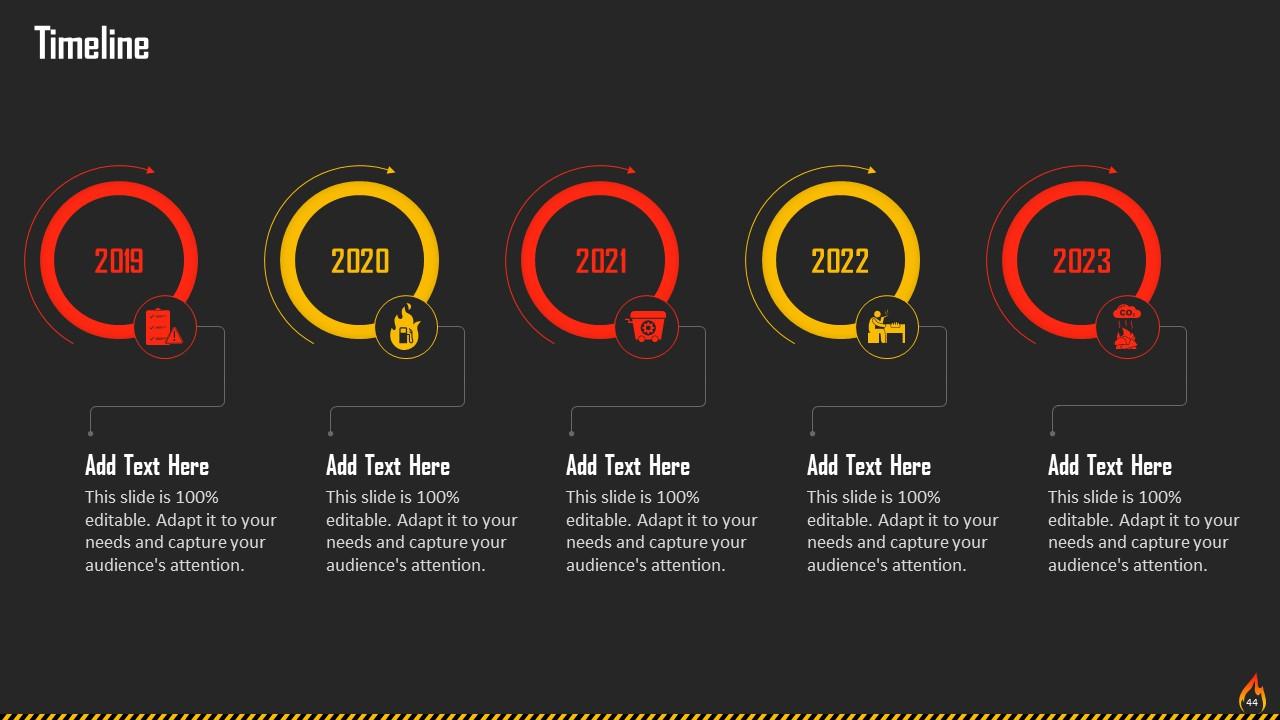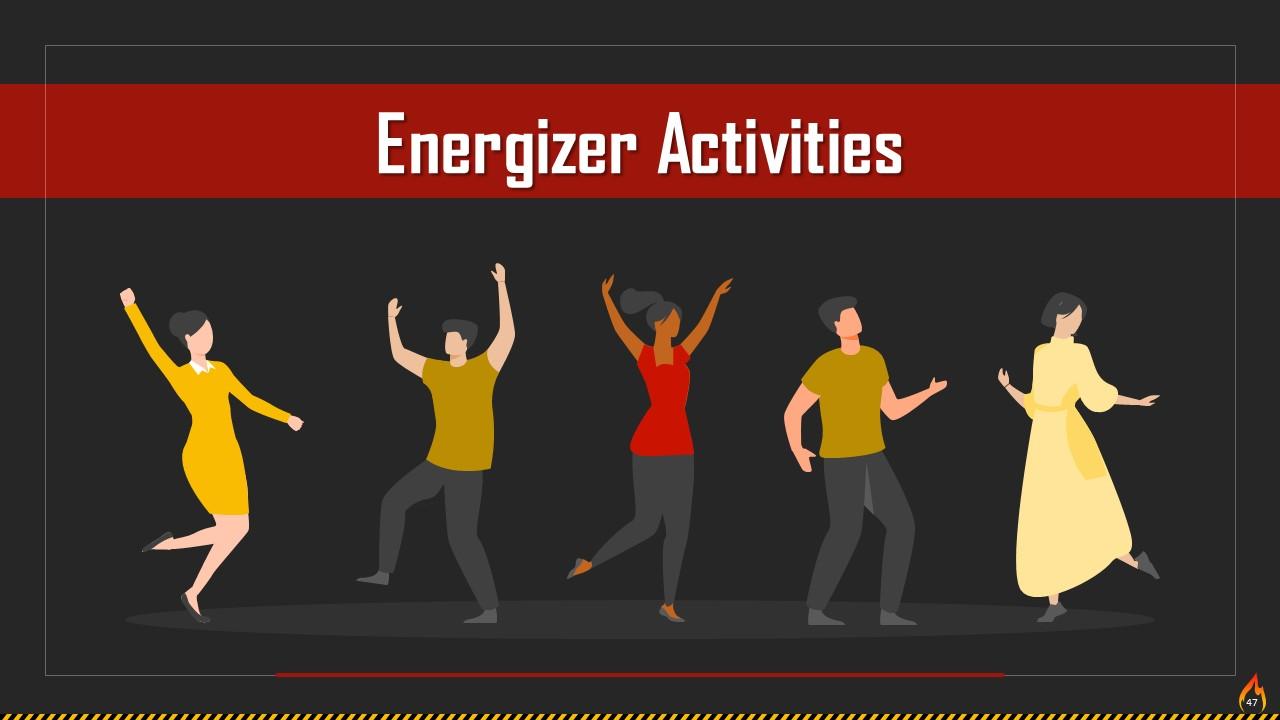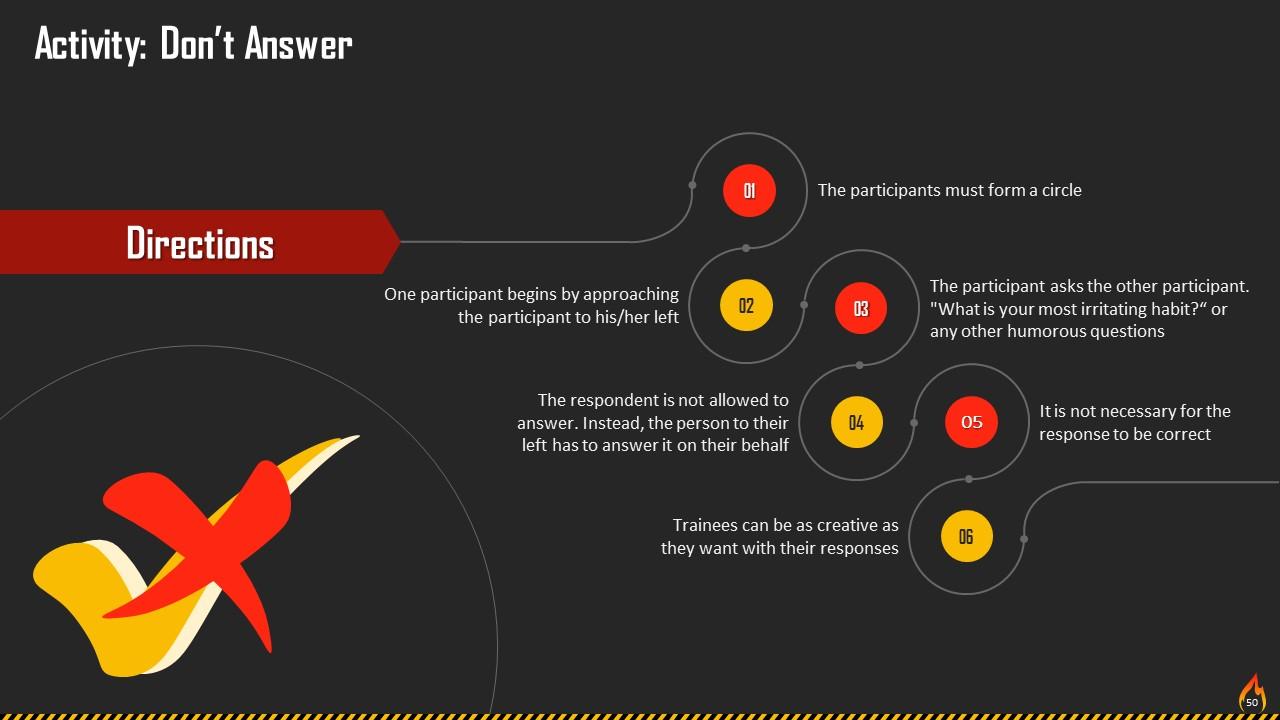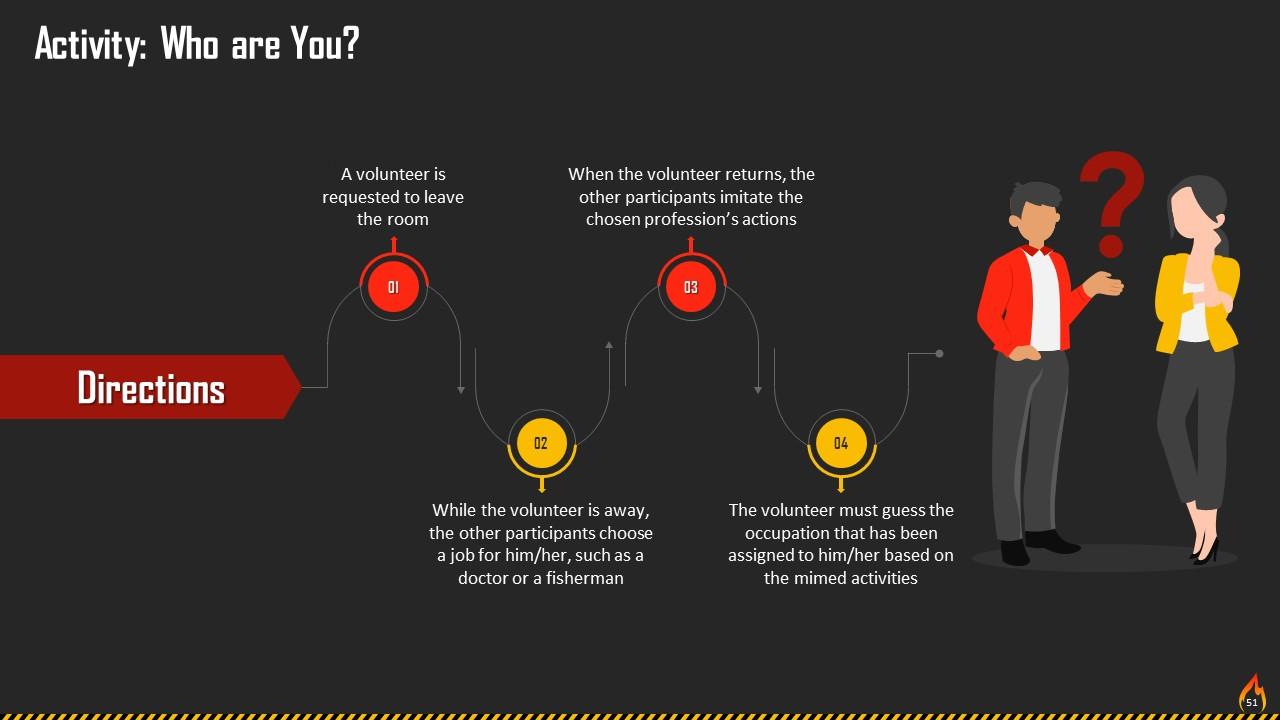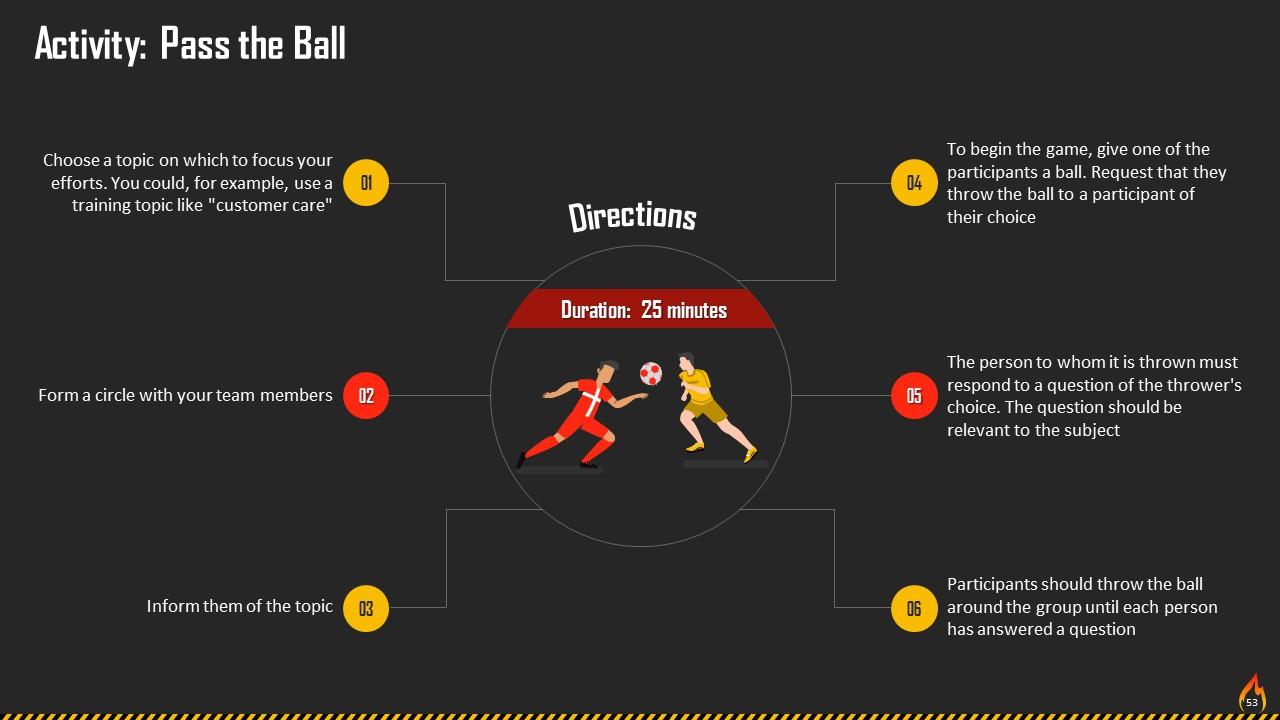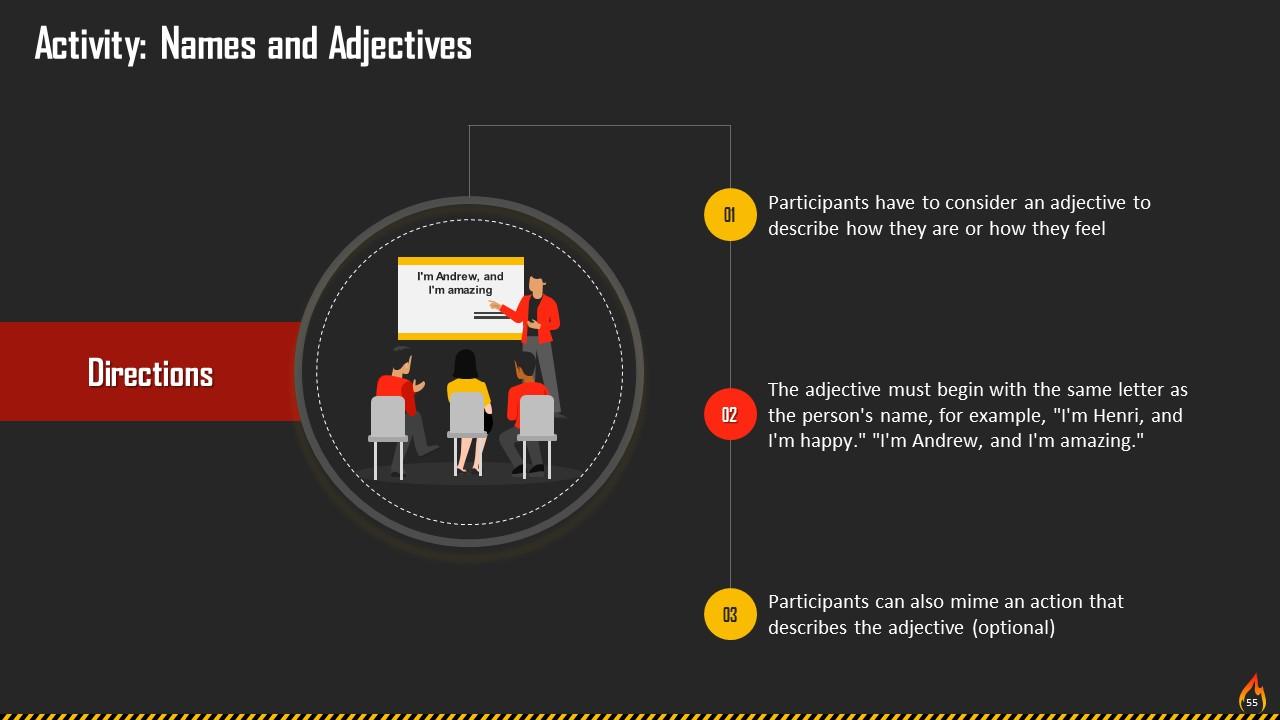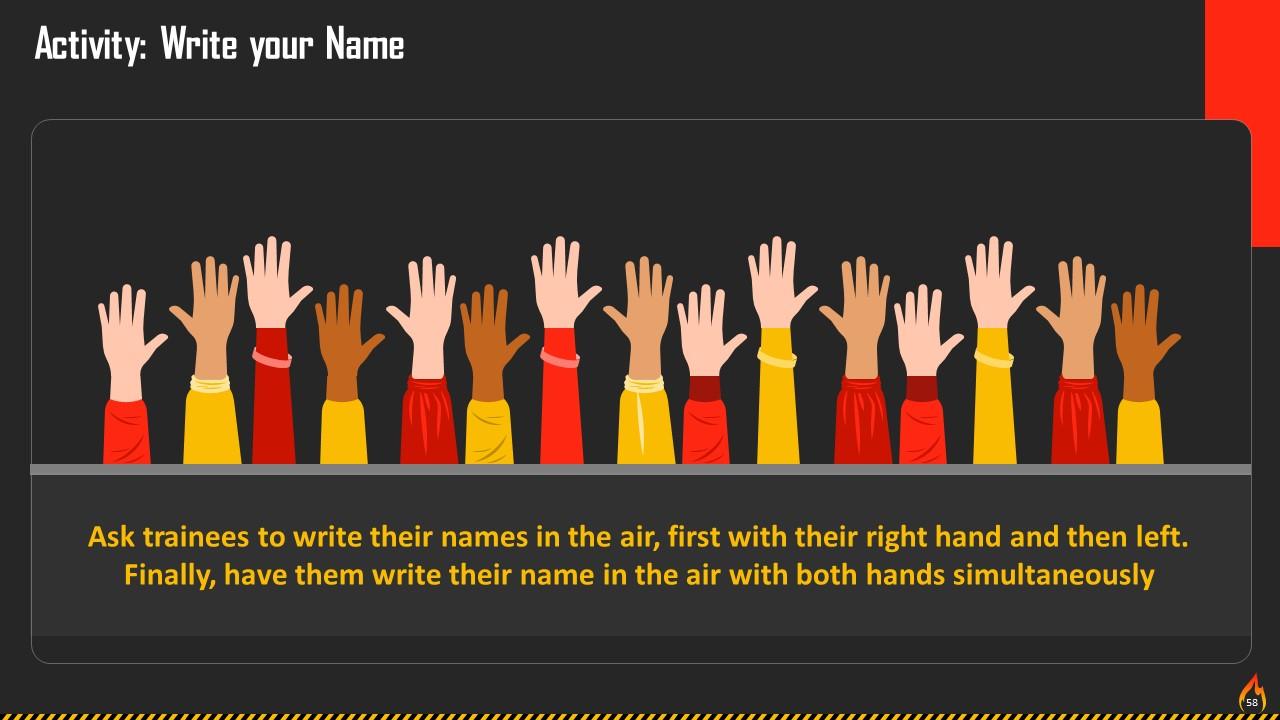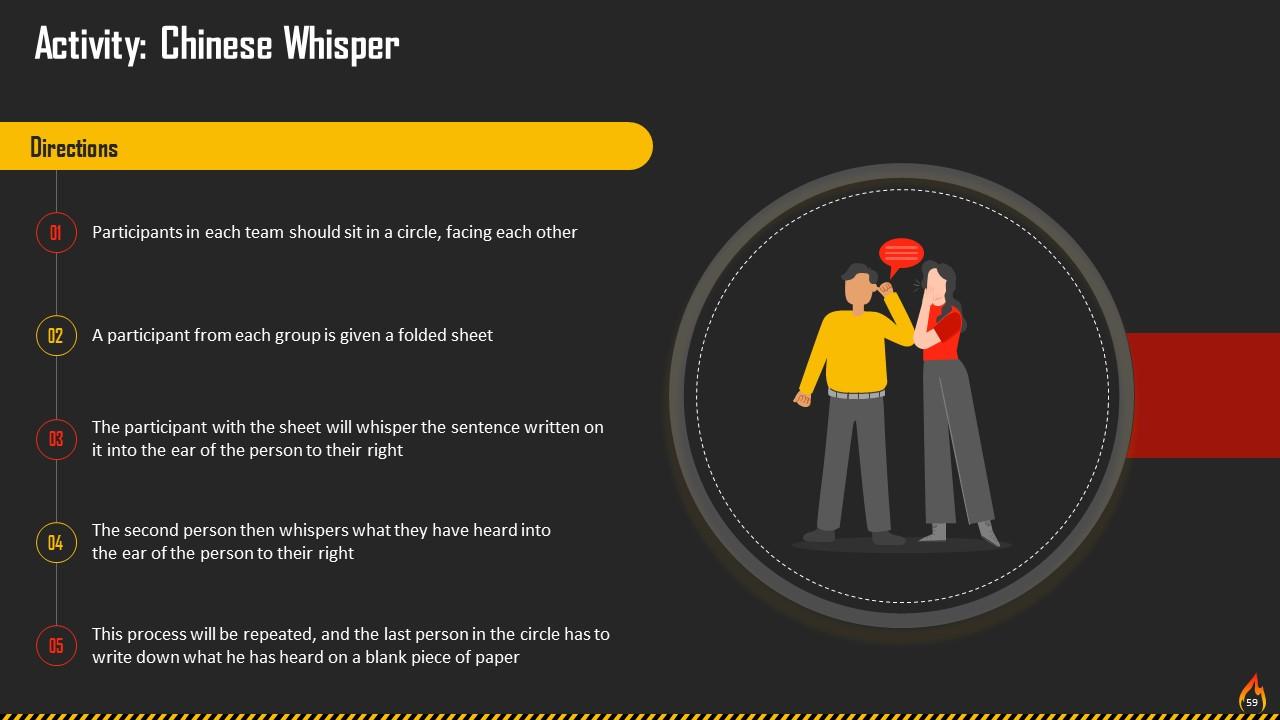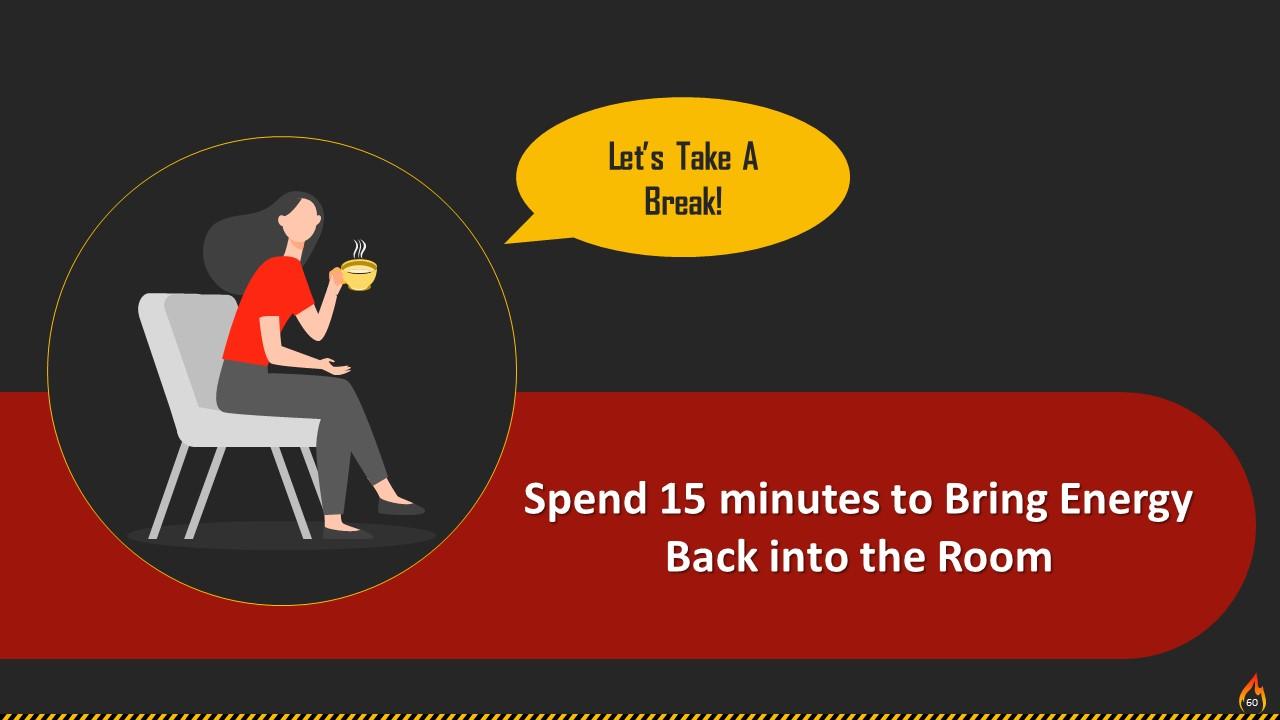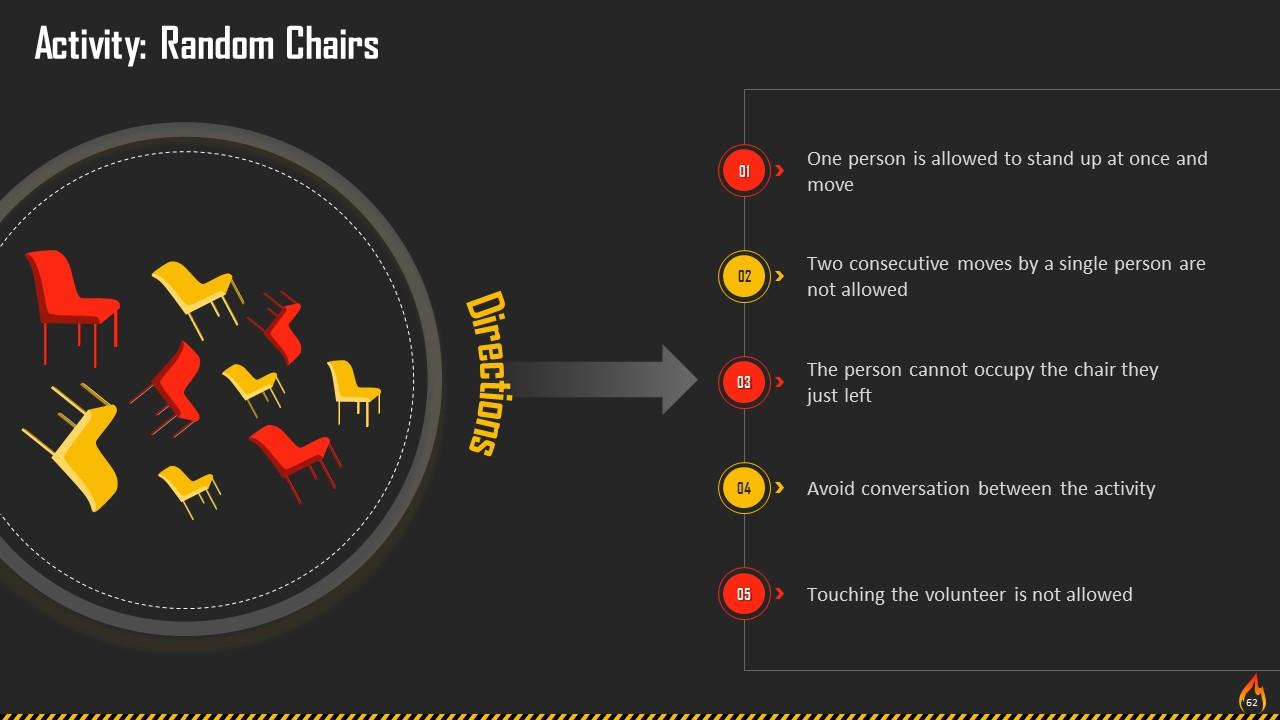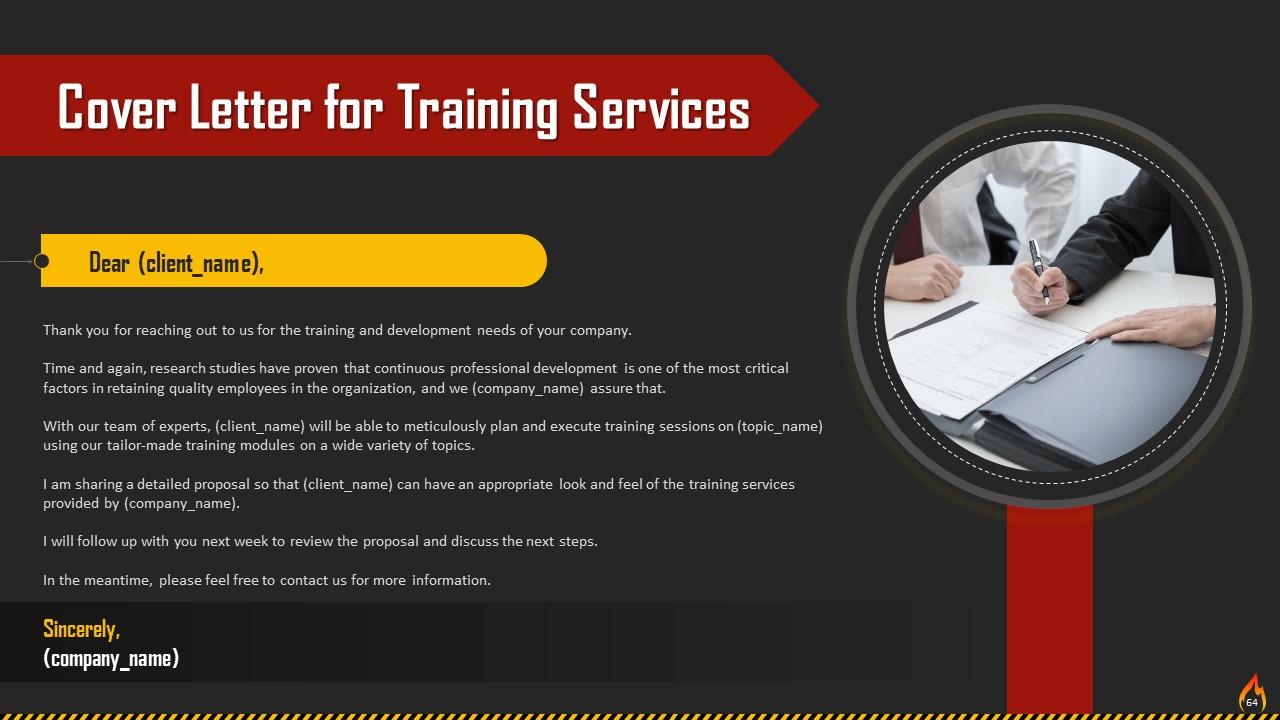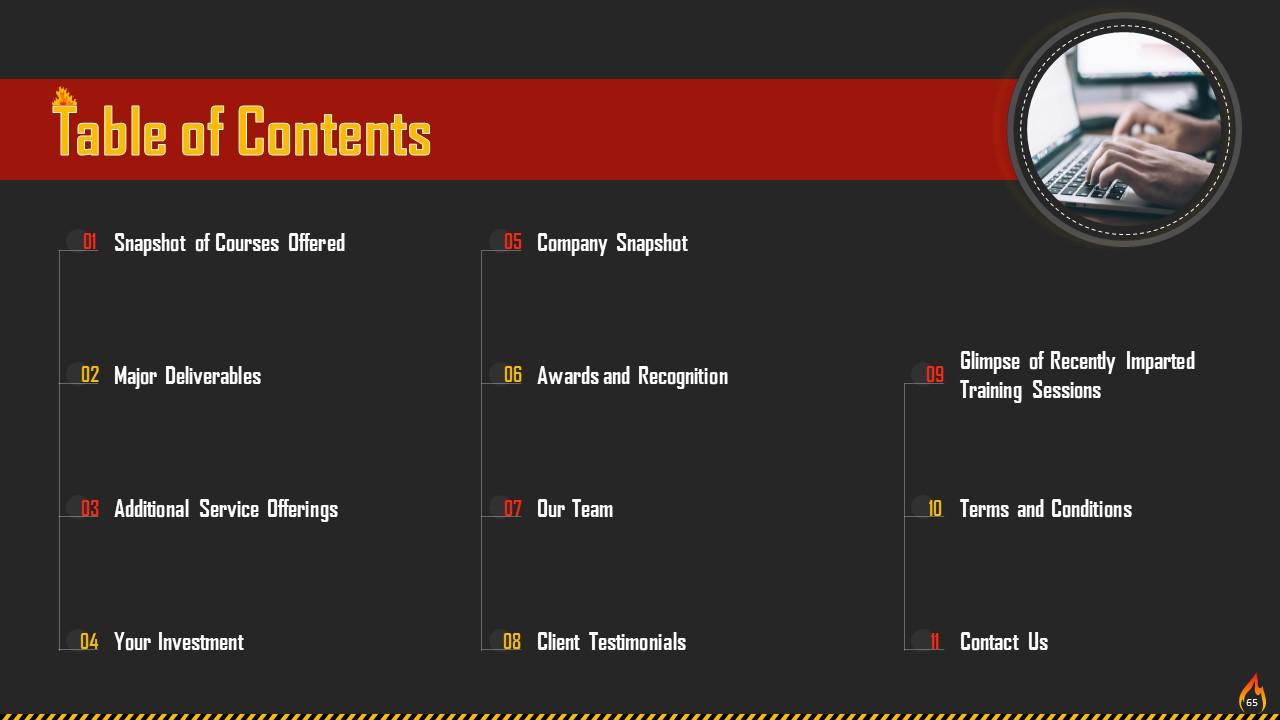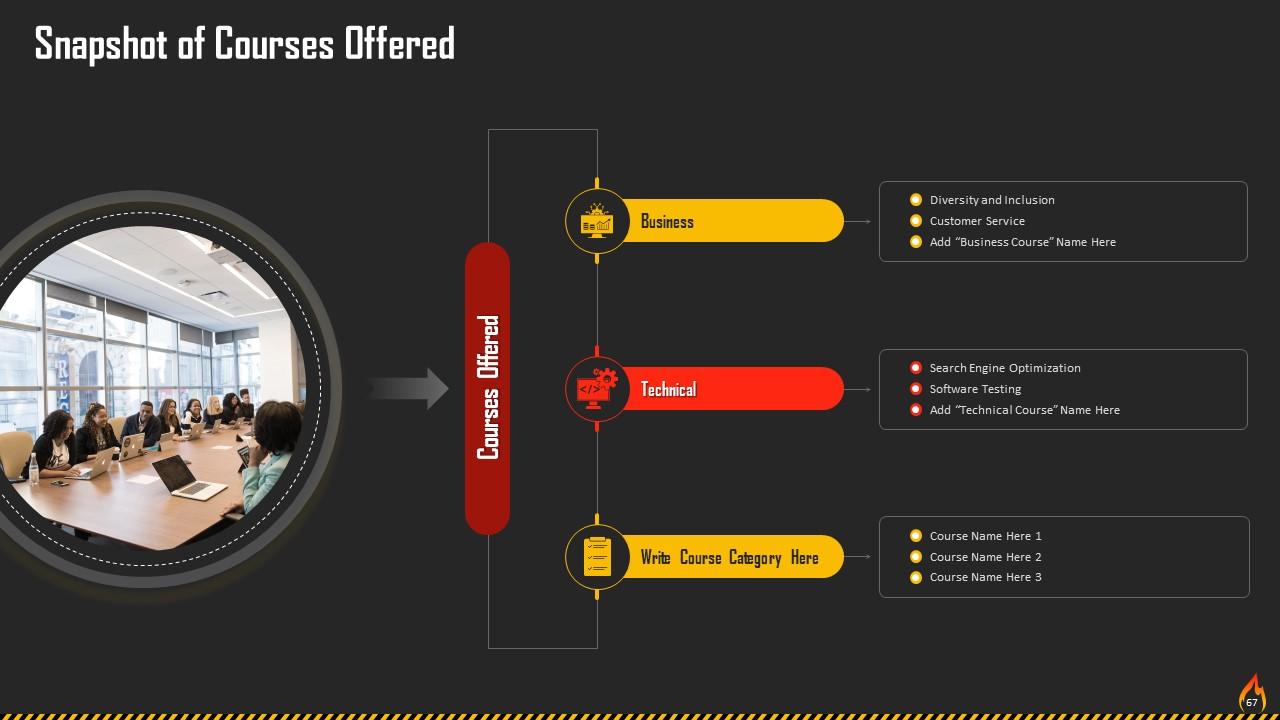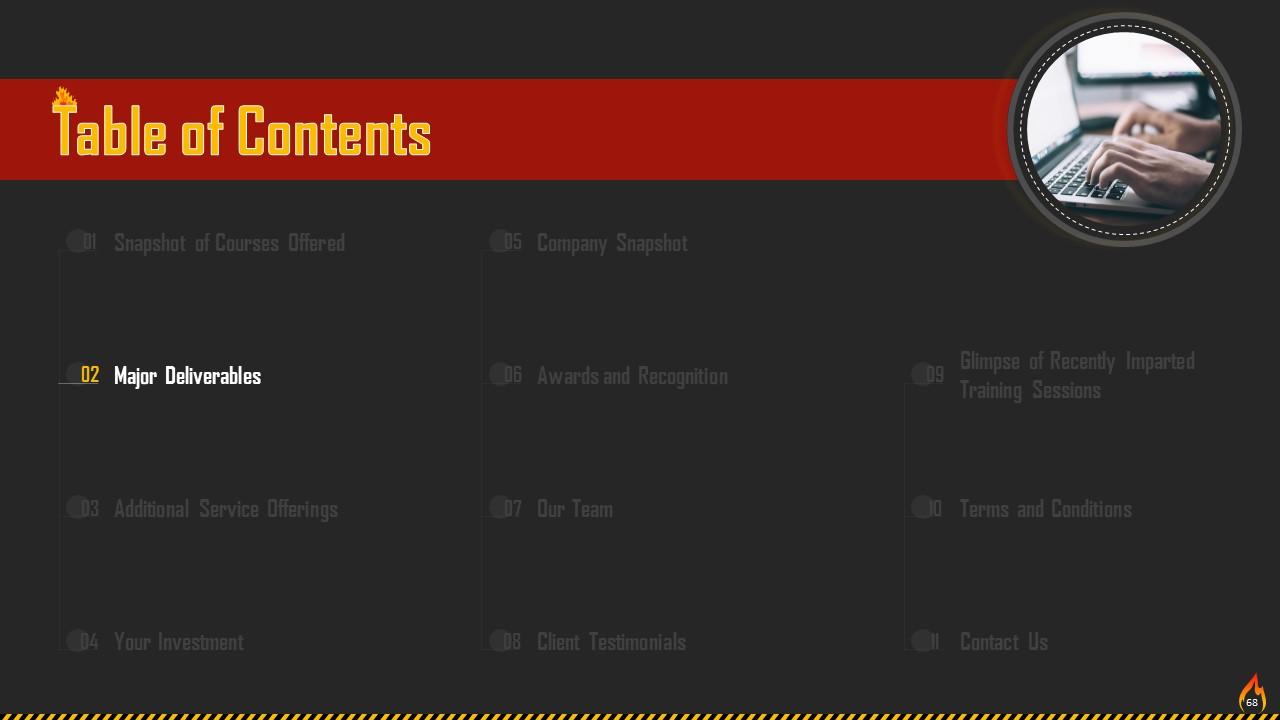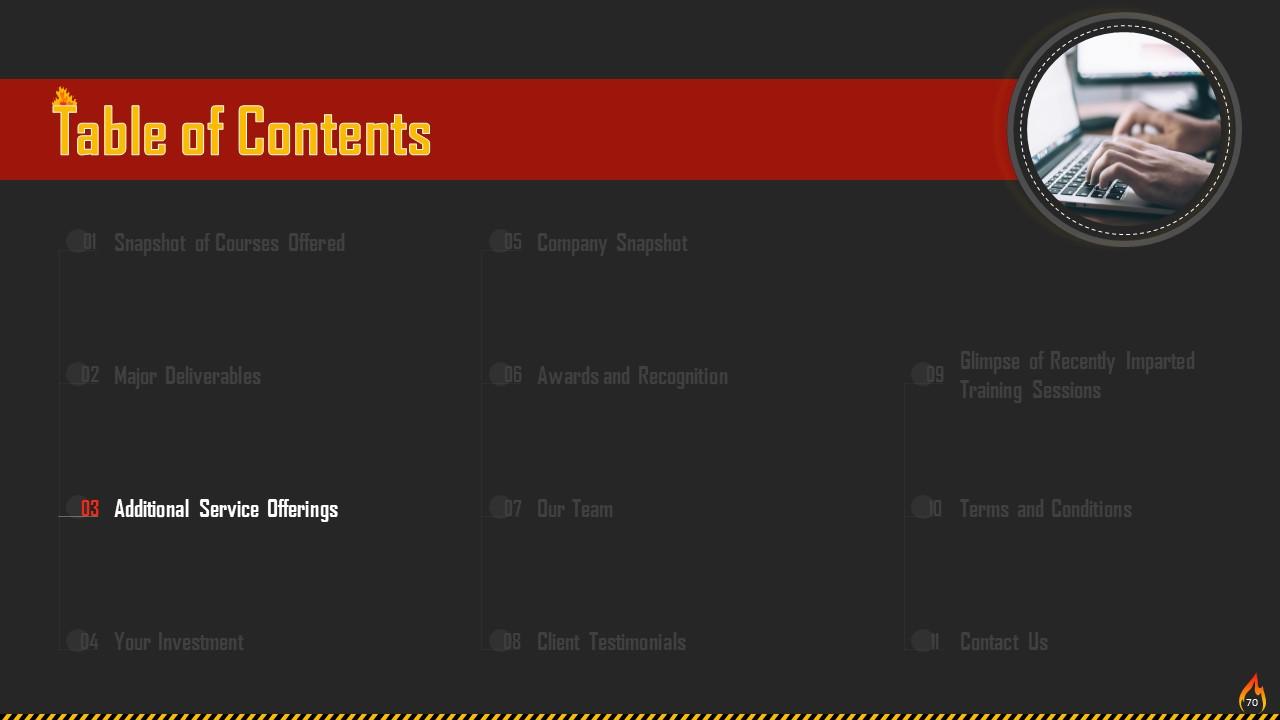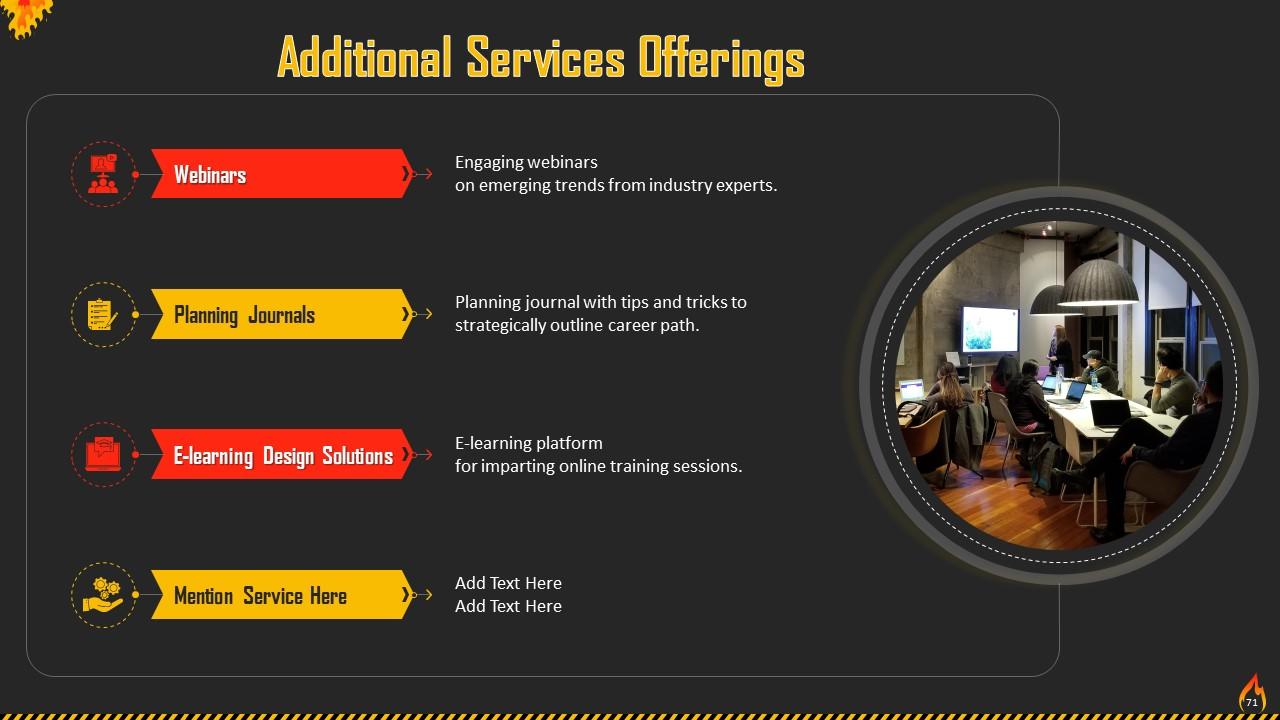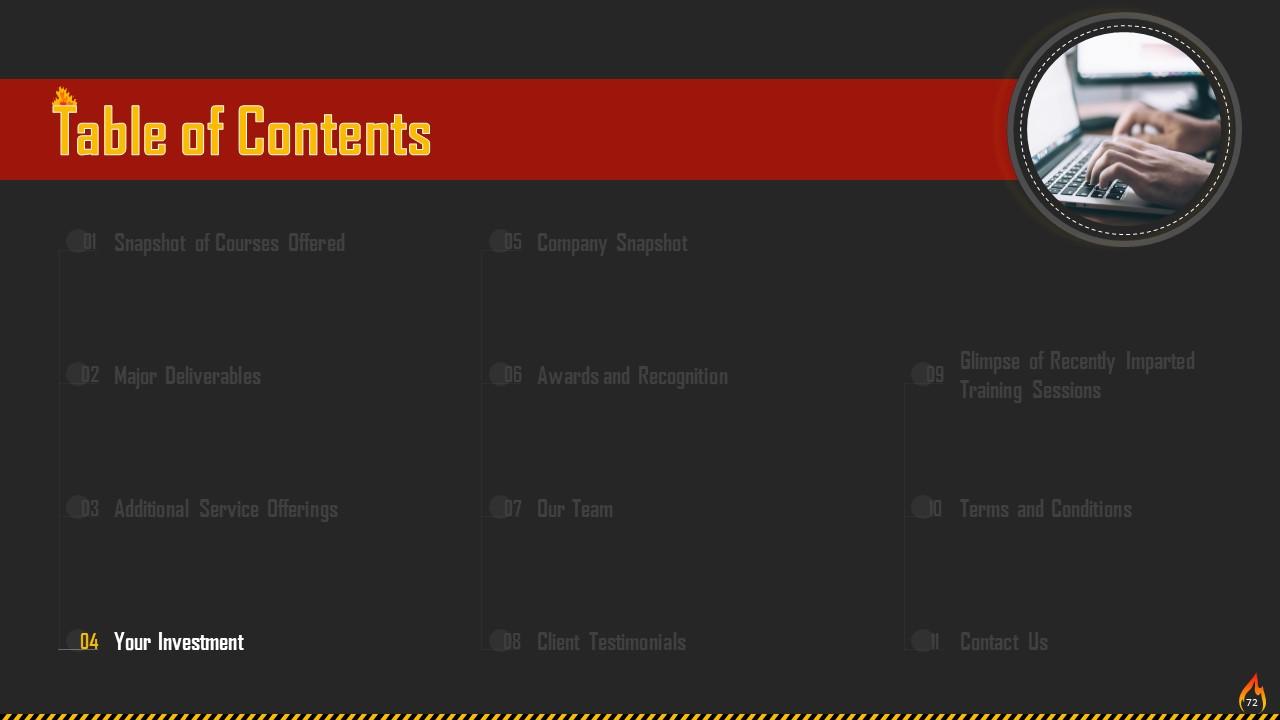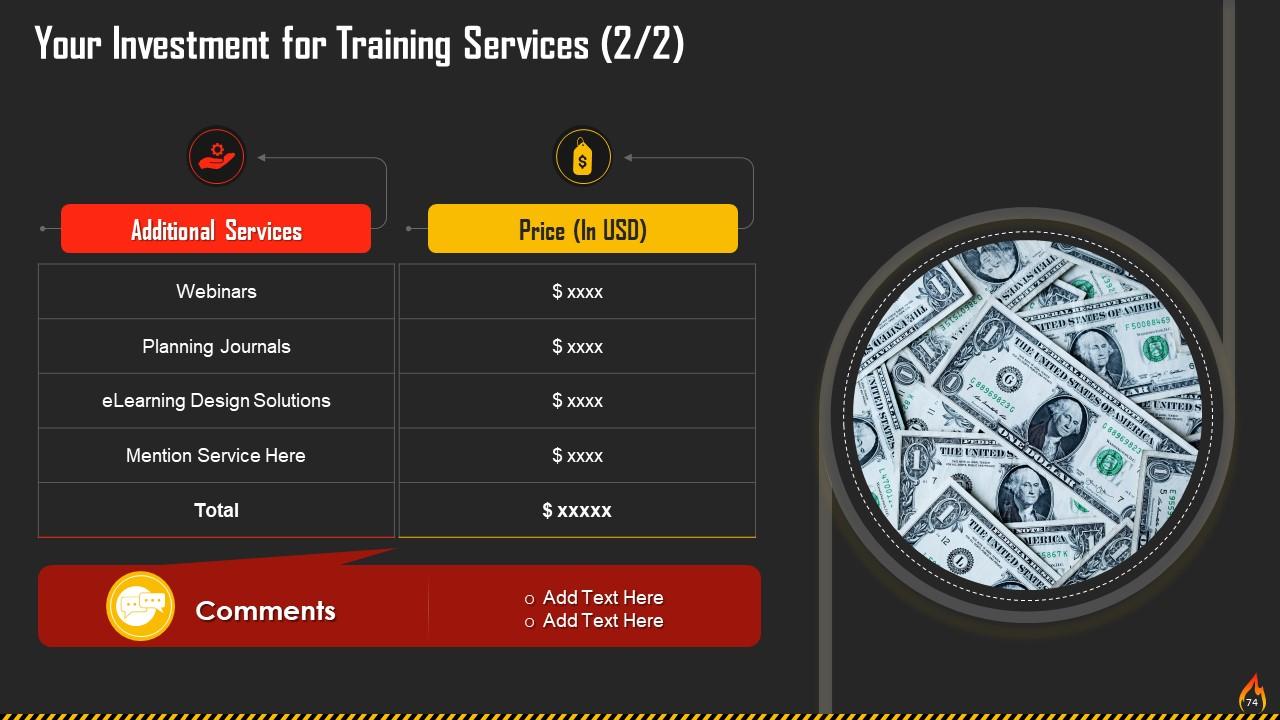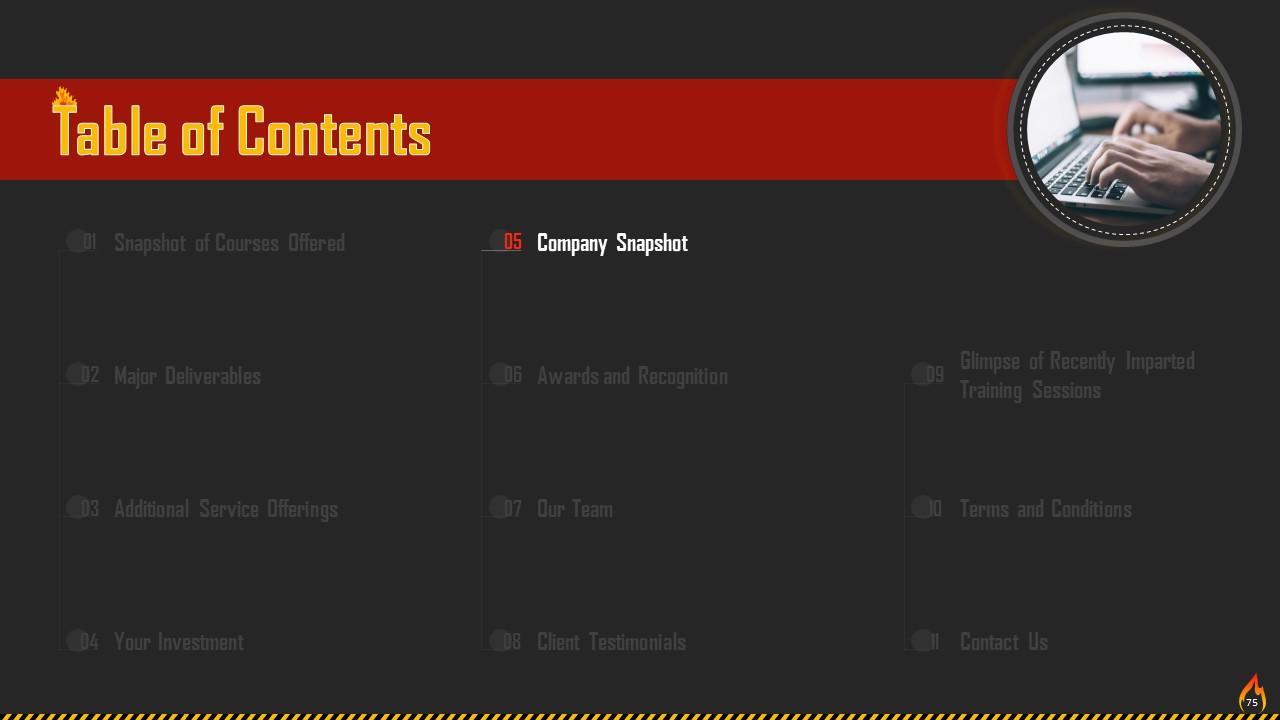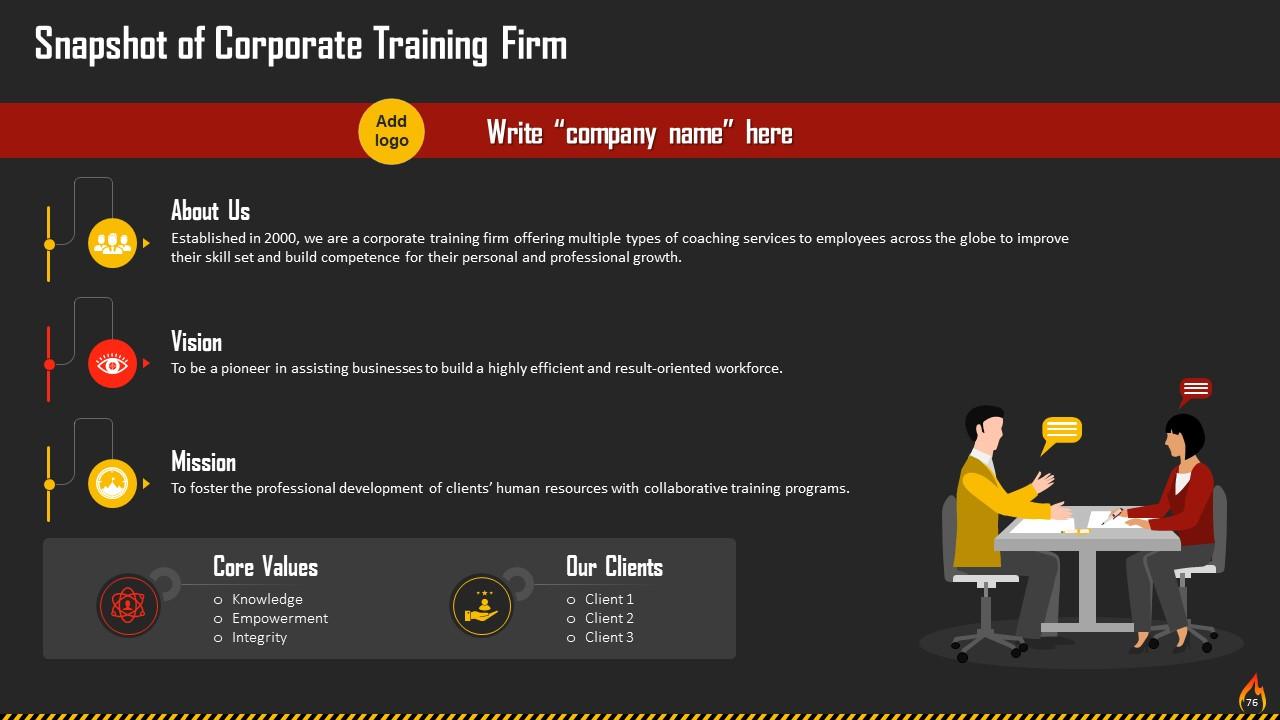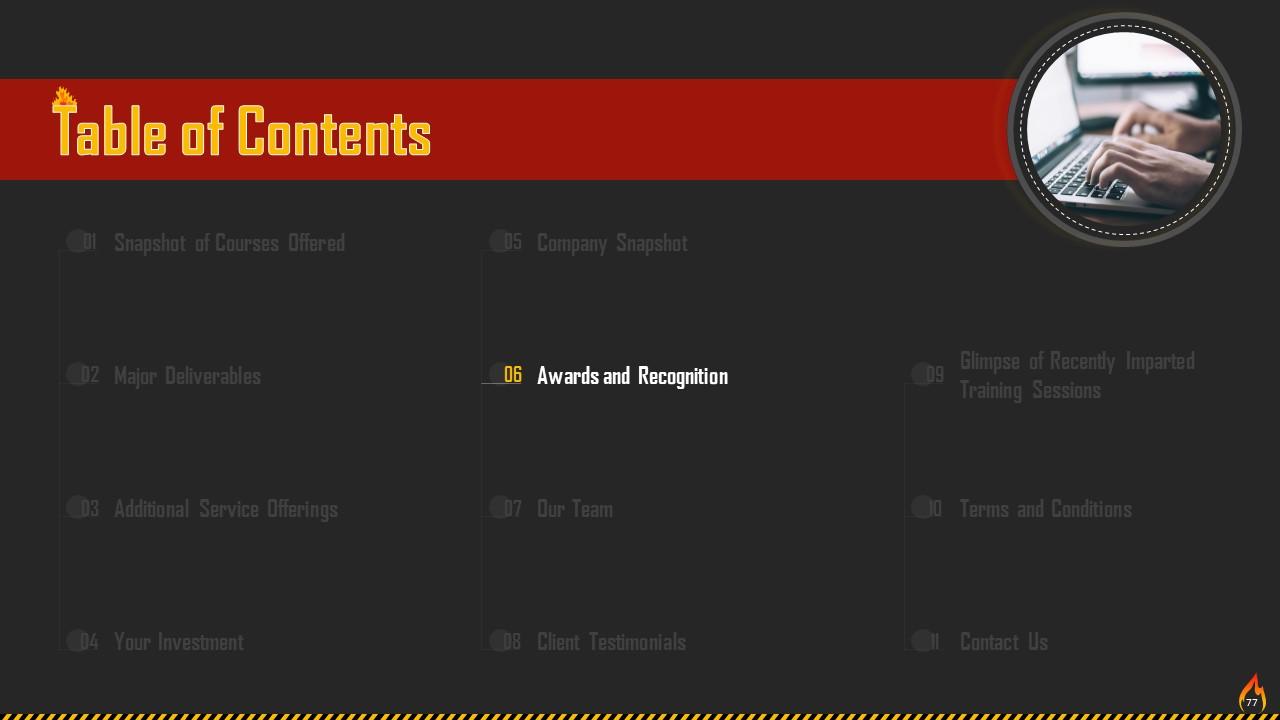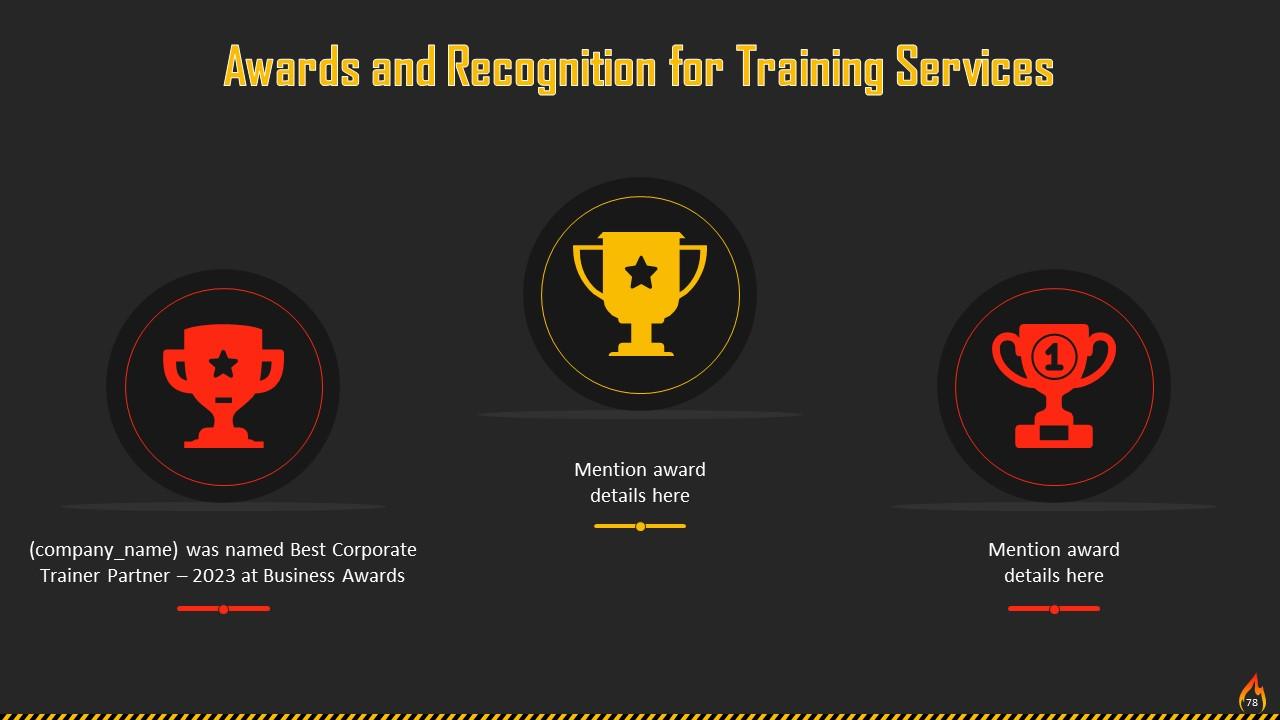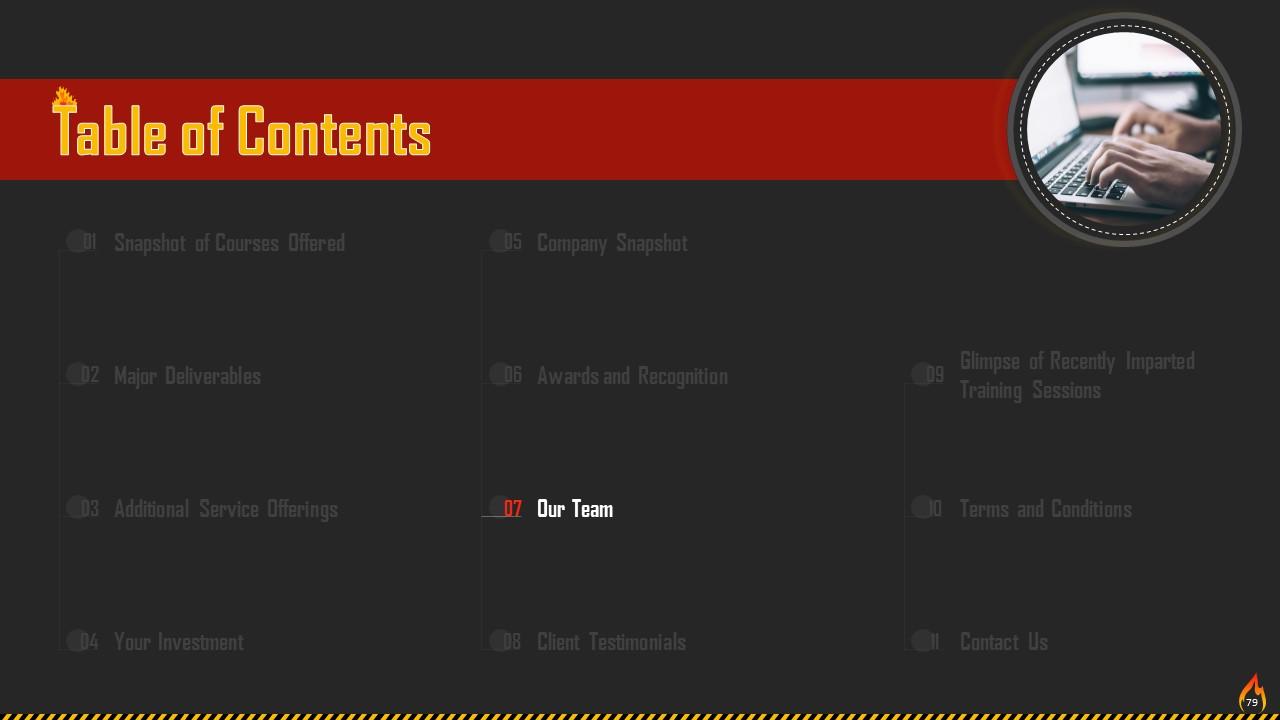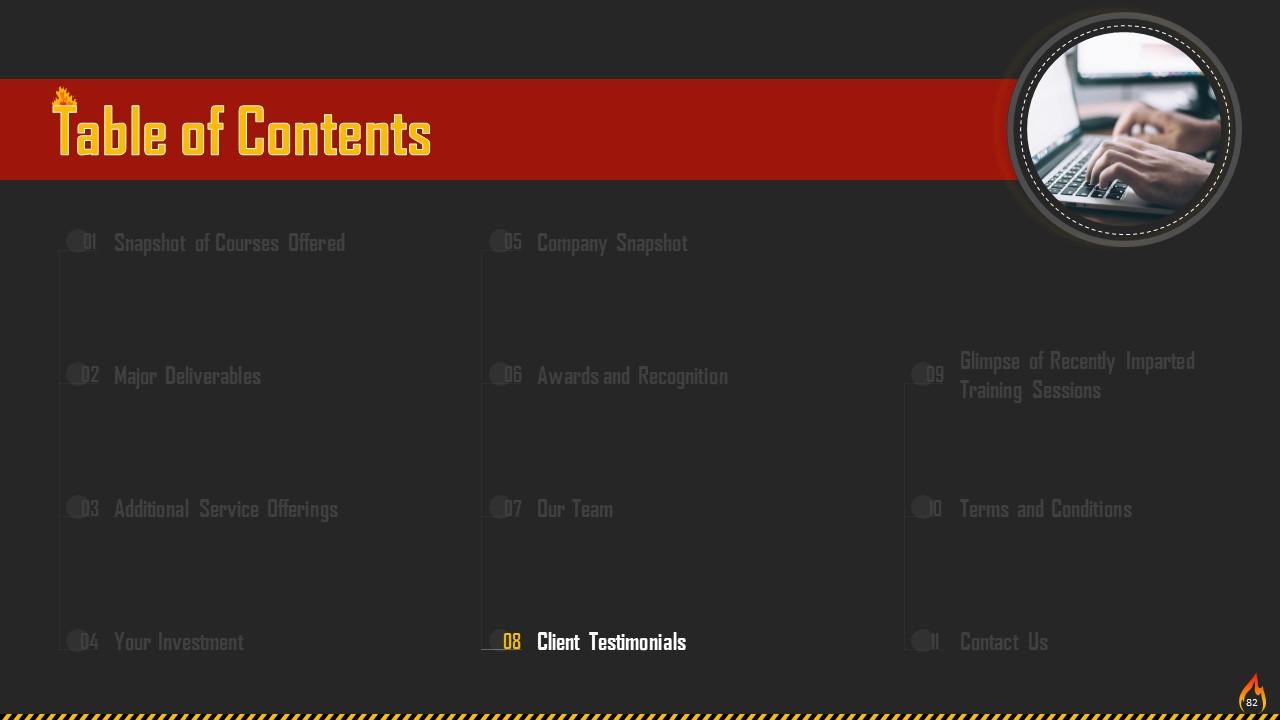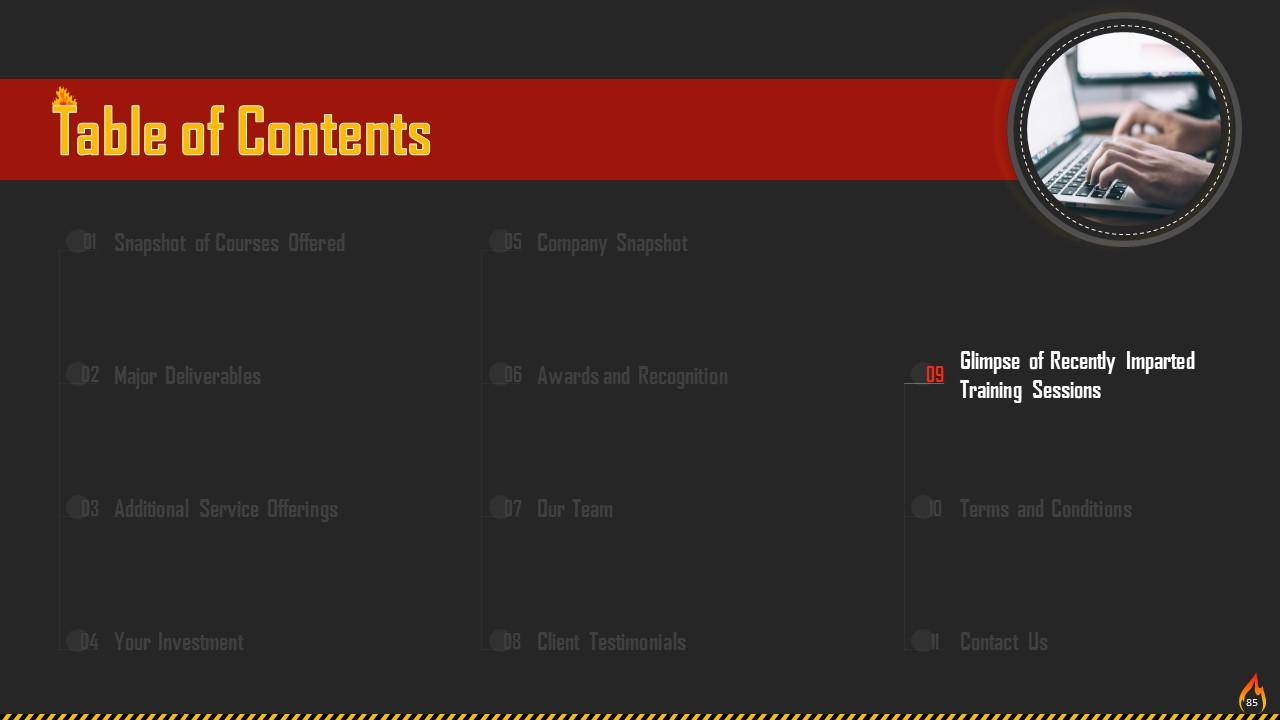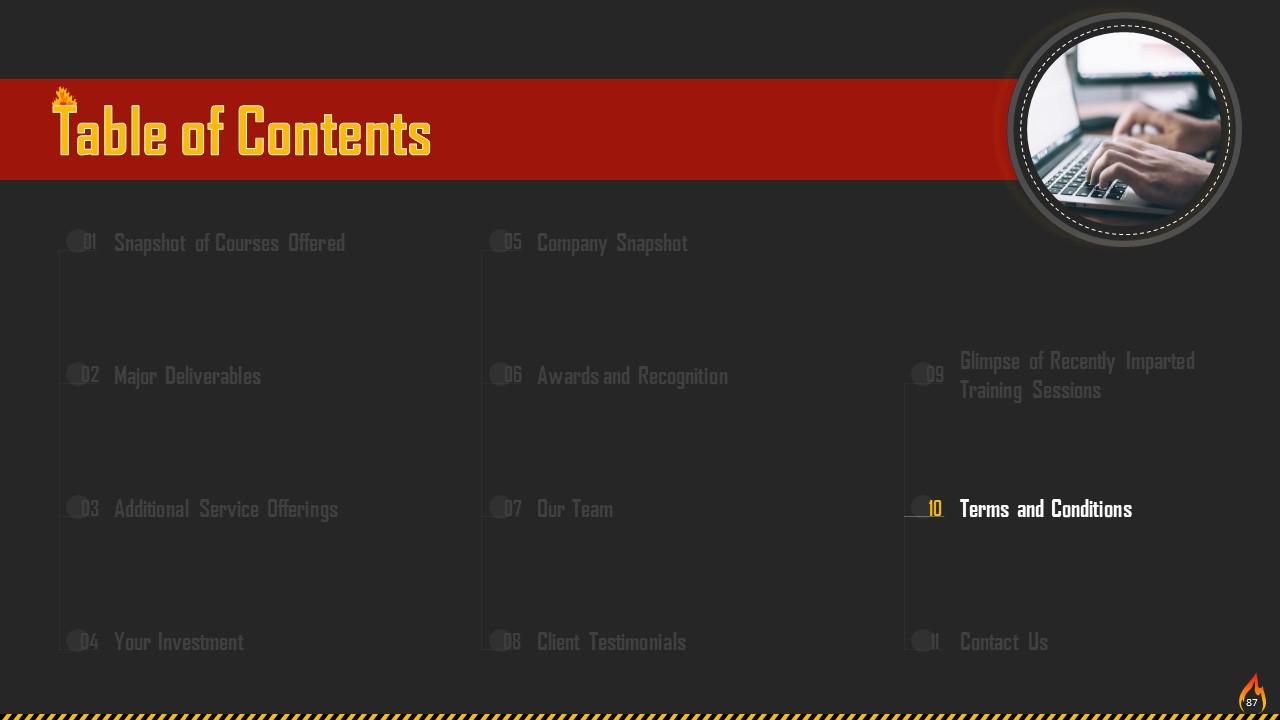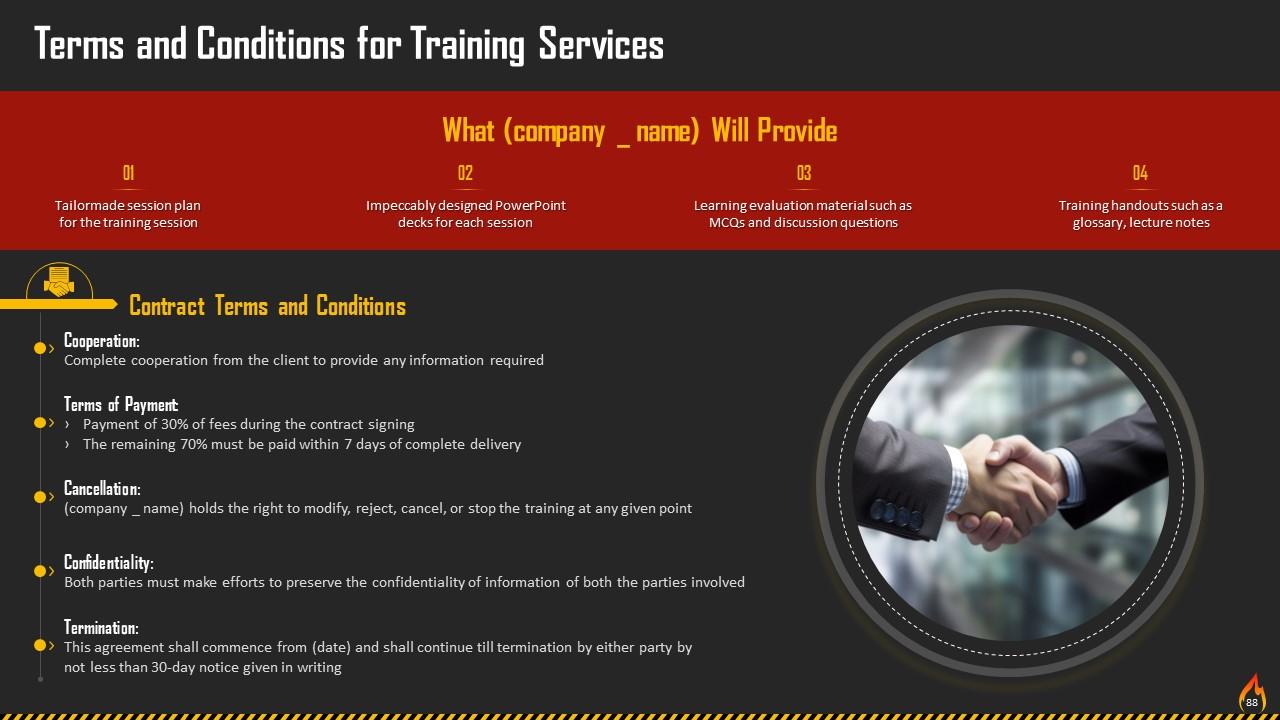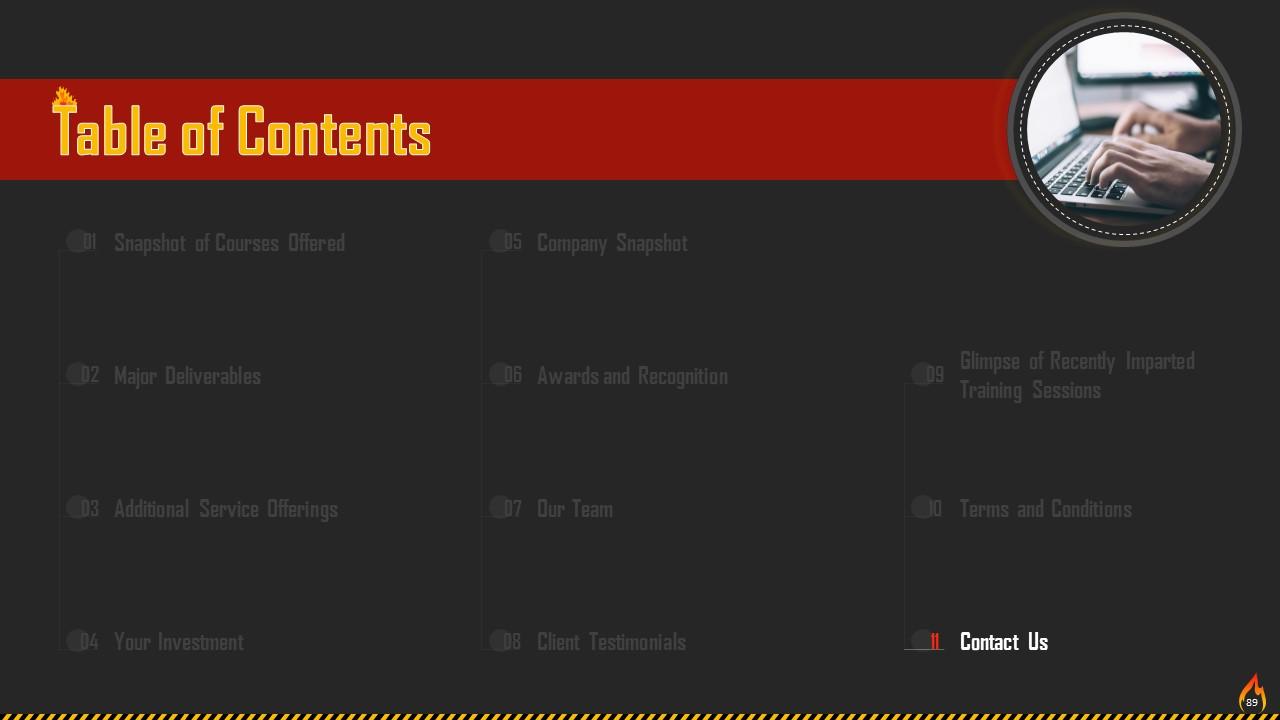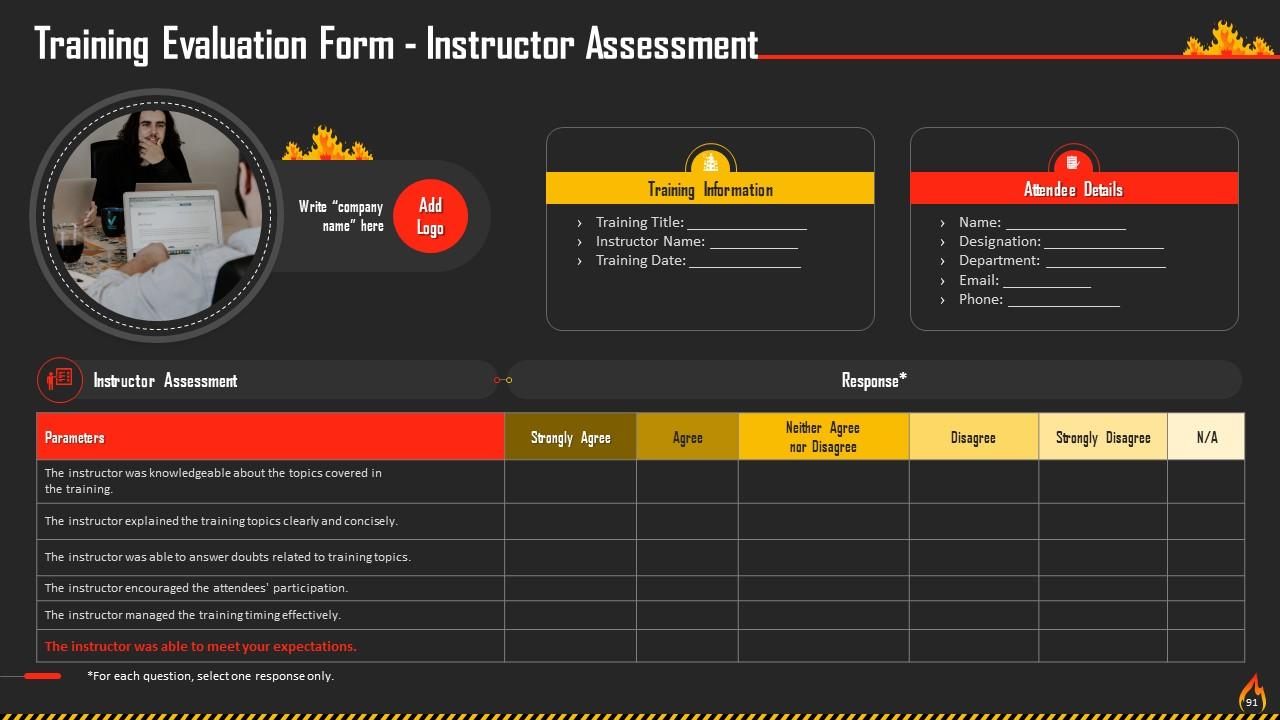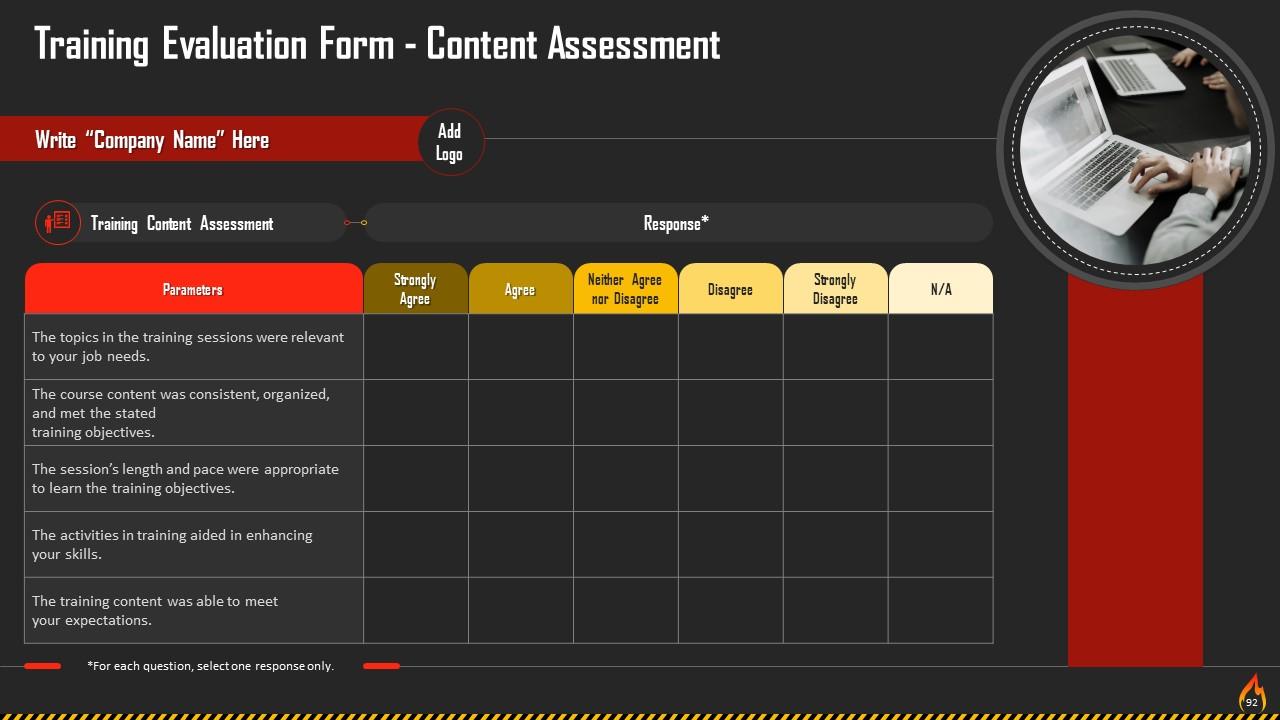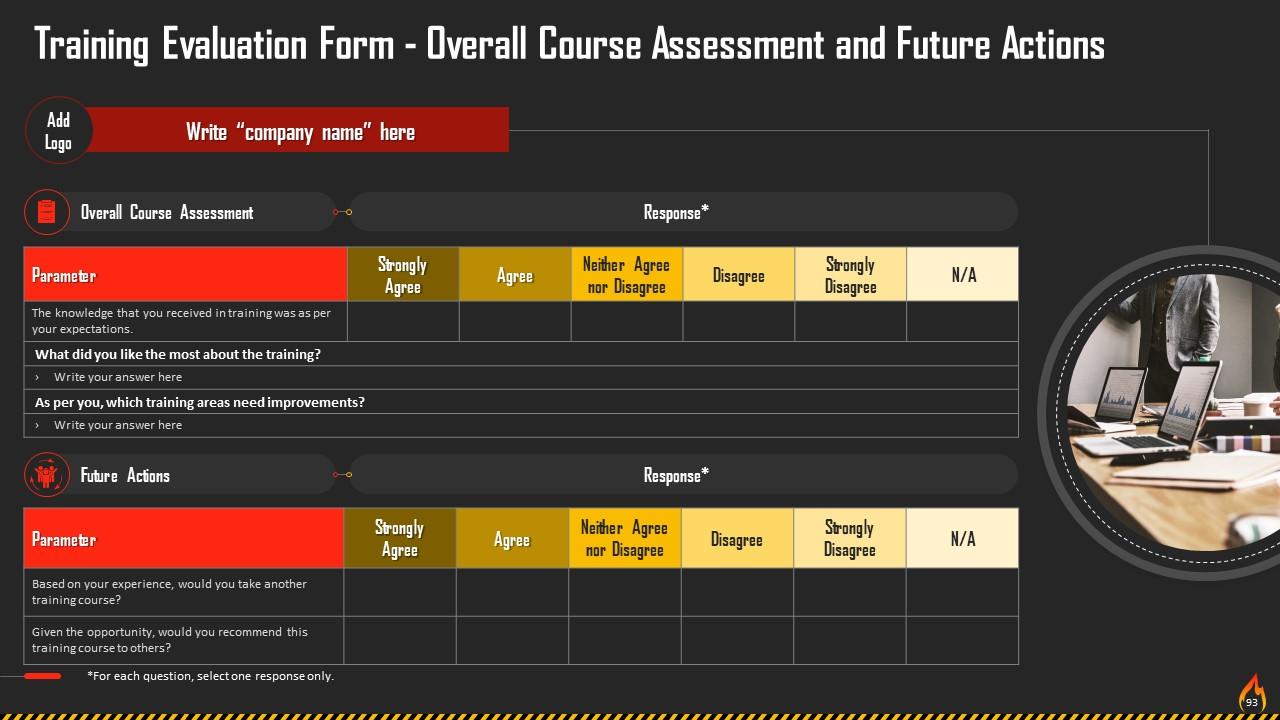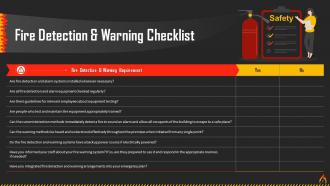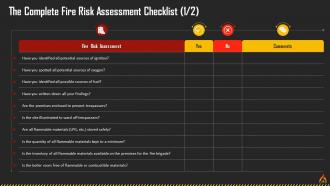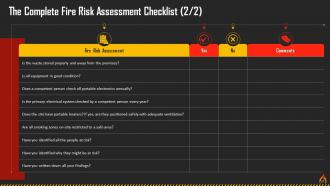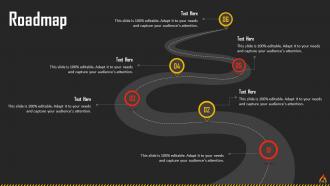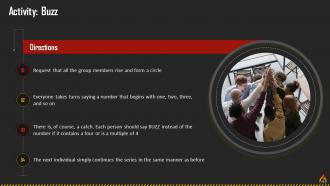Workplace Fire Detection And Risk Assessment Approach Training Ppt
The PPT Training Deck on Workplace Fire Detection and Risk Assessment Approach is an extensive guide that explores the life-saving functionalities of Smoke and Heat Detectors and understands the critical Role of a Fire Alarm System in keeping your workspace secure. It covers the complex process of Fire Risk Assessment to ensure that no stone is left unturned. The PowerPoint Module guides employees in identifying Fire Hazards, Identifying People at Risk, and Evaluating and Reducing Workplace Fire Risk. Each section is coupled with a Checklist that empowers employees to implement what they have learned effectively. It has Key Takeaways and Discussion Questions related to the topic to make the training session more interactive. The Deck also contains PPT slides on About Us, Vision, Mission, Goal, 30-60-90 Days Plan, Timeline, Roadmap, Training Completion Certificate, Energizer Activities, Client Proposal, and Assessment Form.
The PPT Training Deck on Workplace Fire Detection and Risk Assessment Approach is an extensive guide that explores the life..
- Google Slides is a new FREE Presentation software from Google.
- All our content is 100% compatible with Google Slides.
- Just download our designs, and upload them to Google Slides and they will work automatically.
- Amaze your audience with SlideTeam and Google Slides.
-
Want Changes to This PPT Slide? Check out our Presentation Design Services
- WideScreen Aspect ratio is becoming a very popular format. When you download this product, the downloaded ZIP will contain this product in both standard and widescreen format.
-

- Some older products that we have may only be in standard format, but they can easily be converted to widescreen.
- To do this, please open the SlideTeam product in Powerpoint, and go to
- Design ( On the top bar) -> Page Setup -> and select "On-screen Show (16:9)” in the drop down for "Slides Sized for".
- The slide or theme will change to widescreen, and all graphics will adjust automatically. You can similarly convert our content to any other desired screen aspect ratio.
Compatible With Google Slides

Get This In WideScreen
You must be logged in to download this presentation.
PowerPoint presentation slides
Presenting Training Deck on Workplace Fire Detection and Risk Assessment Approach. This deck comprises of 93 slides. Each slide is well crafted and designed by our PowerPoint experts. This PPT presentation is thoroughly researched by the experts, and every slide consists of appropriate content. All slides are customizable. You can add or delete the content as per your need. Not just this, you can also make the required changes in the charts and graphs. Download this professionally designed business presentation, add your content, and present it with confidence.
People who downloaded this PowerPoint presentation also viewed the following :
Content of this Powerpoint Presentation
Slide 3
This slide discusses the importance of fire detection at the workplace. Early fire detection plays a vital role in protecting and saving lives. A fire detection or warning system can significantly minimize losses and maximize fire control efforts
Slide 4
This slide talks about Smoke Detectors as a method of Detecting Fire. A smoke detector is a device that aids in detecting smoke, typically serving as a fire indicator. Smoke can be sensed physically (ionization) or optically (photoelectric).
Instructor’s Notes:
- Ionization Smoke Detector: Typically, these alarms are more responsive to flaming fires. They work by ionizing the air and creating a current flow between two electrically charged plates that comprise a small amount of radioactive material. Smoke disturbs the ion flow entering the chamber, reducing the current flow and setting off the alarm
- Photoelectric Smoke Detector: In general, photoelectric smoke alarms are more responsive to fires that start after a significant amount of smoldering. These alarms direct a light source at an angle away from the sensor into a sensing chamber. The alarm is set off when smoke enters the chamber and reflects light onto the light sensor
Slide 5
This slide talks about heat detectors as a method of detecting fire. A heat detector is a fire alarm that activates when a heat-sensitive element becomes hotter due to the convection thermal energy of fire. Heat detectors help in containing the property damage.
Instructor’s Notes:
- Rate-of-Rise: Rate-of-Rise (ROR) heat detectors function when there is a rapid rise in temperature of its heat-sensing element. This is typically of the order 6.7° to 8.3°C (between 12°F and 15°F) increase per minute, irrespective of the starting temperature
- Fixed Temperature: These are the most popular type of heat detectors. When the heat-sensitive eutectic alloy hits the eutectic point, where it changes from a solid to a liquid, fixed temperature detectors sound an alarm. Generally, the fixed temperature point for electrically connected heat detectors is 58°C (136.4°F)
Slide 6
This slide gives an overview of fire alarm systems and their importance. A fire detection system must be integrated with a reliable fire alarm system to be efficient and effective. Fire alarms are essential for warning home residents or building occupants about a fire emergency
Slide 7
This slide depicts a Fire Detection and Warning Checklist.
Slide 8
This slide gives an overview of hazards and risks. A potential source of harm is known as a hazard. The likelihood of that harm being realized in a particular incident, combined with the magnitude of potential harm, is known as a risk
Slide 9
This slide depicts an activity to identify hazards around your surroundings using this picture as an illustration example.
Slide 10
This slide highlights the hazards depicted in the picture. These are: Clothing caught in machinery, improper PPE, improper lifting technique, flammable liquid leaking, pulling box from middle of the heap, and exposed wires.
Slide 11
This slide gives the definition of fire risk assessment and discusses its goal. Fire risk assessment is an examination of workplace activities and items that could cause harm to people from fire.
Slide 12
This slide lists the necessary requirements for a fire risk assessment. These include being thorough & accurate while evaluating fire risk, including key insights & methods for reducing & managing the risk of fire as the key policy and execution step, and more.
Slide 13
This slide depicts the five-step fire risk assessment approach. The steps are: Identify fire hazards, pinpoint people at risk, evaluate - remove - reduce - protect from risk, record - plan - inform - instruct - train, and review.
Slide 14
This slide discusses the first step of the fire risk assessment approach. This step entails the identification of hazards. In this step, you need to identify sources of ignition, fuel, and oxygen.
Instructor’s Notes: You must also take into account structural elements like ducts, holes carved into firewalls without stops, sizable concentration of combustible materials, open roof spaces, excessively long escape routes.
Slide 15 to 17
These slides depict the Checklist for identifying sources of ignition, fuel, and oxygen.
Slide 18
This slide talks about the second step of the fire risk assessment approach. This step is identifying people at risk, such as anyone who may be sleeping on the property, children or parents with babies.
Slide 19
This slide shows a checklist for Identifying People at Risk.
Slide 20
This slide discusses step 3 of the fire risk assessment approach. This step includes evaluating, removing, reducing, and protecting from risk. The management of the premises and how people use it will affect your evaluation of risk.
Slide 21
This slide depicts a checklist for Evaluating, Removing, Reducing, and Protecting from risk.
Slide 22
This slide talks about the fourth step of the fire risk assessment approach. This step includes Recording, Planning, Informing, Instructing, and Training. You must record the fire hazards identified in step 1 and those at risk identified in step 2. You should also record the action you took under step 3.
Slide 23
This slide depicts a checklist for recording, planning, informing, instructing, and training.
Slide 24
This slide discusses the last step of the fire risk assessment approach. This step entails the review of the assessment. You must ensure that the fire-risk assessment is up to date and valid. You will have to re-examine it in case you suspect it is no longer valid, such as after a near miss or every time there is a major change to the level of risk in your premises/building.
Slide 25 to 27
These slides depict review checklist for carrying out a Risk Assessment at Your Workplace.
Slide 47 to 62
These slides contain energizer activities to engage the audience of the training session.
Slide 63 to 90
These slides contain a training proposal covering what the company providing corporate training can accomplish for the client.
Slide 91 to 93
These slides include a training evaluation form for instructor, content and course assessment.
Workplace Fire Detection And Risk Assessment Approach Training Ppt with all 98 slides:
Use our Workplace Fire Detection And Risk Assessment Approach Training Ppt to effectively help you save your valuable time. They are readymade to fit into any presentation structure.
-
Delighted to see unique and eye-catching PowerPoint designs that are so easy to customize.
-
I downloaded some of the presentations for work. They were simple to modify and saved me a lot of time and effort.


